Backpacking the Philippines (Epic Budget Travel Guide • 2020)
JUMP TO : The Philippines Travel Itineraries | Places to Visit | Where to Stay | Travel Tips | Cost of Travel

Interested? PIN NOW, read later!
With seven thousand islands to explore, backpacking the Philippines is a different experience from travelling around the rest of South East Asia. The Philippines is a vast country stretching across the North Pacific Ocean; a land of pirates and smugglers, ancient tribes and mysterious jungles, active volcanoes and chocolate hills, epic parties, and uninhabited islands. You simply cannot go wrong with backpacking in The Philippines.
Cheap beer, beautiful beaches, adrenaline pumping activities and some of the most friendly, genuine, people in all of Asia; the Philippines truly captured my heart. I made some incredible friends in the Philippines and I have to say, it is one of the easiest countries in the world to travel around as the locals are so friendly.
I was in The Philippines for just a month on my first trip and six weeks on my second trip. I plan to return for at least three months as part of my next adventure and I managed to see some truly stunning sites despite only being there for a short period of time.
So Amigos here is an awesome guide to Backpacking the Philippines. With this, you’ll have everything that you could possibly need to ace this country and have the time of your life. Enjoy!
Table of Contents
- Where to Go Backpacking in the Philippines
- Best Travel Itineraries for the Philippines
- Places to Visit in the Philippines
- Backpacker Accommodation in the Philippines
- Top Things to Do in the Philippines
- The Philippines Travel Tips
- Staying Safe in the Philippines
- The Philippines Travel Guide - Getting In and Around
- The Philippines Backpacking Costs
- Must-Try Experiences in the Philippines
- A Brief History of the Philippines
- Closing Thoughts
Where to Go Backpacking in the Philippines
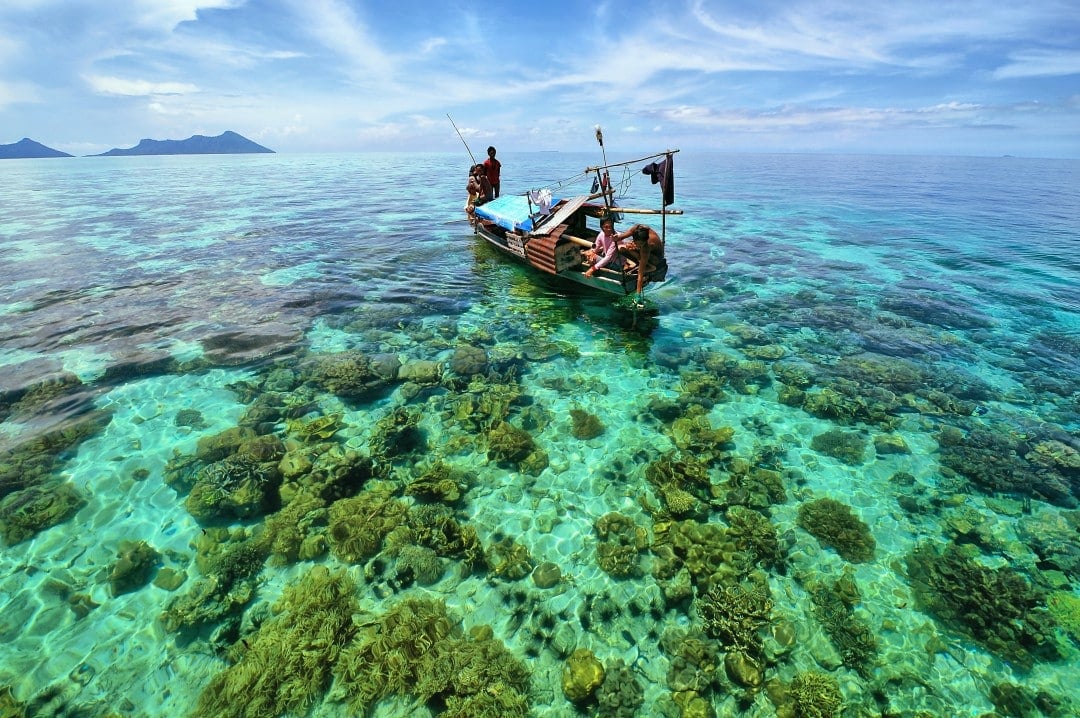
Backpacking The Philippines is amazing – this guide will show you exactly how to do it
With thousands of islands to choose from, you can spend your lifetime in the Philippines and never see it all. If you can stay in the Philippines for more than a month, you should be able to visit at least most of the major tourist hotspots. That said, it will require some careful planning and might prove to be quite intensive.
No matter where you go, you should be able to find some beautiful beach and epic diving. Palawan and Cebu are the most famous spots in the Philippines, but you don’t have to look much farther to get off the beaten path!

Visiting Philippines? Don’t risk having to sit on the floor or change your itinerary because you missed the last ticket at the station! Find the best transport, best time and the best fare with Bookaway. And why not use what you’ve saved to treat yourself to a nice Coconut Wine upon arrival?
It only takes 2 minutes! Book your transport on Bookaway now and guarantee your seat easily.
Best Travel Itineraries for the Philippines
We have designed three epic itineraries that have the potential to be combined if you have enough time (and a chance to extend your visa). The third itinerary can be completed on a one month visa, or split into two if you have less time!
The Philippines is a super popular destination for newlyweds so if you and your beloved are heading here to celebrate your recent nuptials, be sure to check out Honeymoon backpackers ultimate guide to enjoying your honeymoon in The Philippines.
Backpacking the Philippines 10 Day Itinerary #1: Sagada
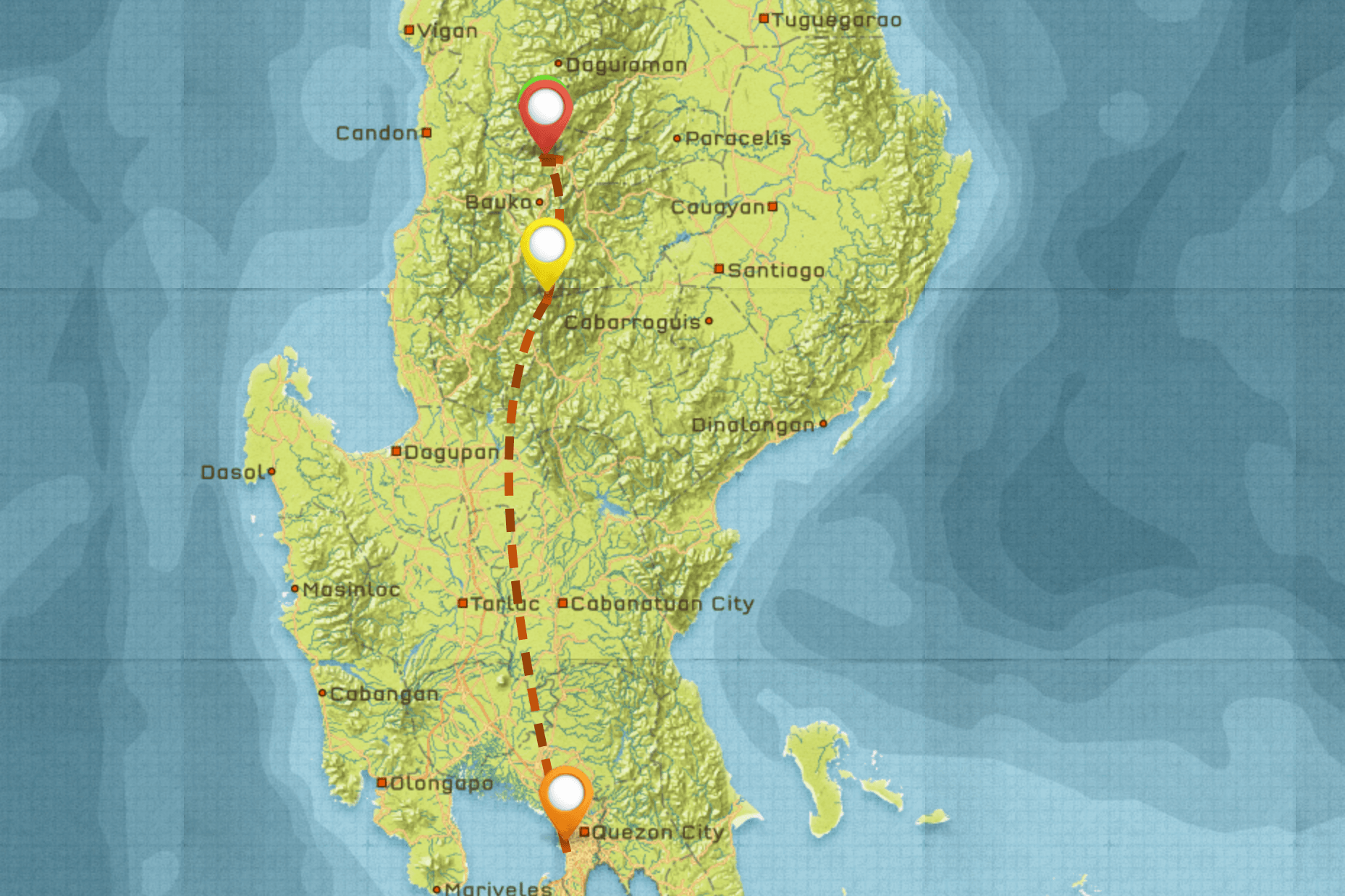
This itinerary is for mountain and cave lovers!
10 Days in The Philippines: Sagada and the Main Island
While most people head south for Palawan, consider this adventurous 10-day itinerary instead (or add it on to the next itinerary). Start your trip to the Philippines staying in the capital, Manila. From here, you can take a six-hour bus journey to the legendary Mt Pulag and the truly stunning sea of clouds. Not quite a mountain, the trek to the summit is typically done over two days and is very, very easy.
Continue on to Sagada (about a 4-hour bus journey) afterward for some non-stop adventure. Go hiking and camping in the hills, try your hand at rock climbing, visit Bokong Falls or the eerie hanging coffins – a local tradition.
For even more of an adrenaline rush, make sure to go caving and spelunking in the surrounding caves. The most popular is the Cave Connection tour, which takes you from Lumiang Cave through Sumaguing Cave.
The Philippines 3 Week Itinerary #2: Palawan
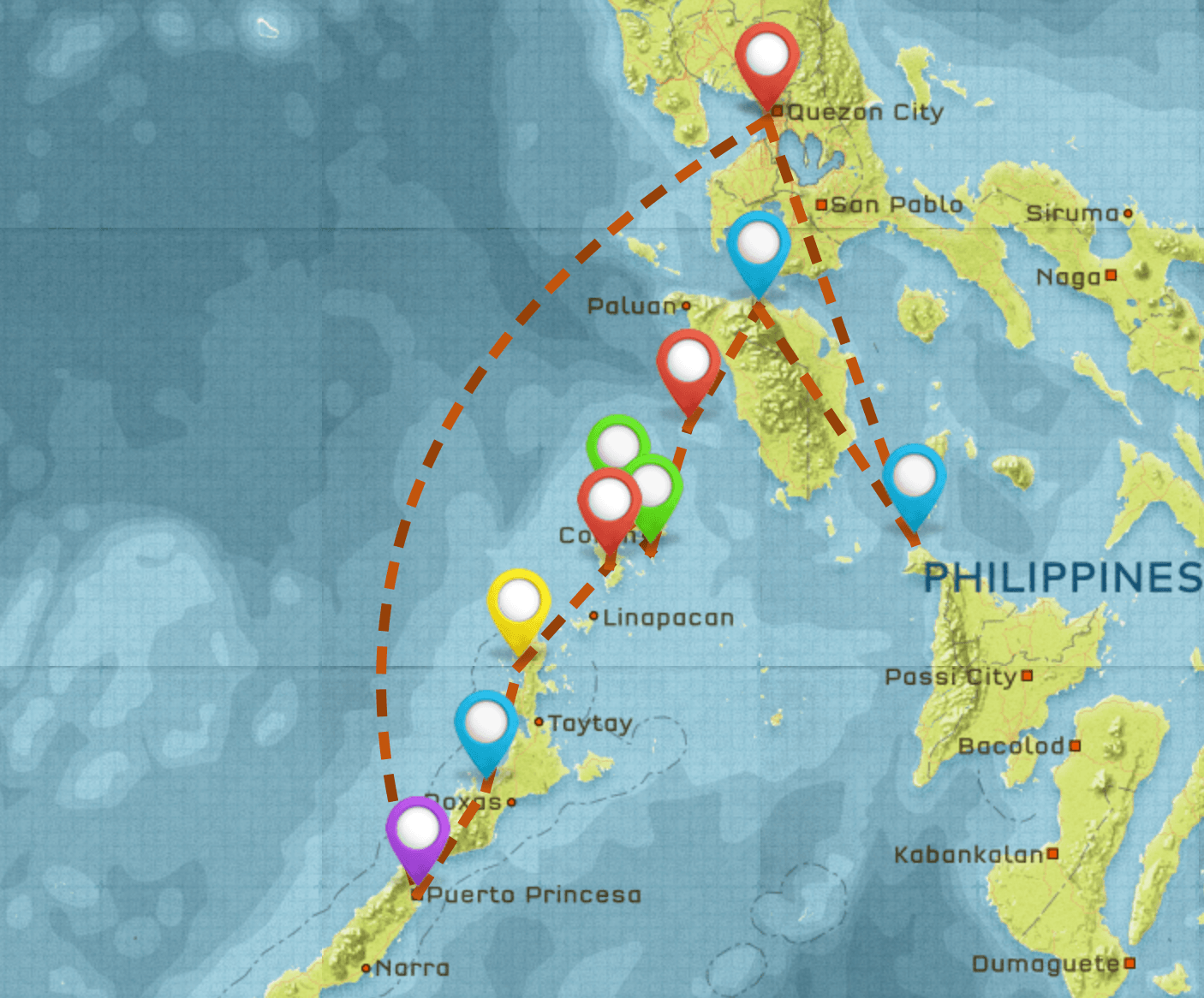
Looking for some beach time? Itinerary #2 is for you!
3 Weeks in the Philippines: Palawan
This is the best Philippines itinerary for diving fanatics or those wanting to experience the sheer natural beauty the Philippines has to offer. If you have 4 weeks, you can slow down and stay in places for longer.
Fly to Puerto Princesa, and leave pretty quickly to get over to Port Barton. This area has several islands with good beaches and snorkeling.
Next, travel to the El Nido area, known for its island hopping. If you have the money, you can arrange an expensive boat ride to Tubbataha Reef Marine Park, known for its pelagic marine life.
Take a ferry to Coron, which is famous for its WWII wreck diving. If you are a diver, take a day or two to explore the nearby Apo Reef as well. You can also check out other islands off the beaten path, like Culion Island and Busuanga Island. From what I’ve heard it’s nothing but huts, beautiful beaches and diving.
Ferry again to Puerto Galera. I have heard this area decent local dive scene and is easy to reach from Manila. You can end your trip with a visit to Boracay if you have some time. It’s a bit out of the way, but easy to reach from Puerto Galera. This is one of the most famous beaches in the Philippines due to its incredible sand.
- Travel Itinerary for El Nido
- Travel Itinerary for Coron
The Philippines 4 Week Itinerary #3: Diving, Whale Sharks, and Surf
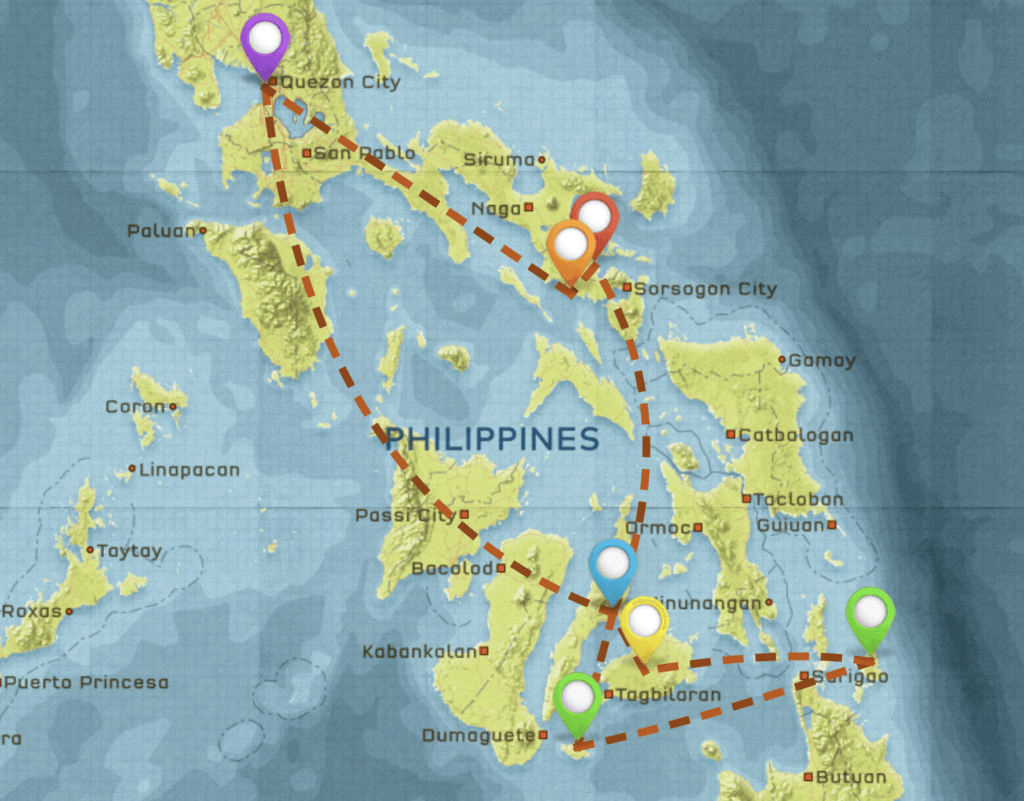
Feel like a little island hopping?
4 Weeks in The Philippines: Scuba, Swim, and Whale Sharks
This itinerary gets a bit off the grid, so you want at least 4 weeks to enjoy it.
Catch a flight to Cebu from Manila. Chances are you came here to see the incredible Kawasan Falls. Badian is located 98km southeast of Cebu & is well known for its thrilling canyoneering experience. You can catch a habal habal from Dalaguete to Kawasan Falls/Badian, for 200p per person.
Next, let's get off the grid a bit and head to Siquijor Island, which used to be known for its witch-like healing practices. Siquijor has amazing snorkeling and diving too. There are tranquil waterfalls, caves & forests to explore on the island. This is a great island to lay back and chill with a beer.
Afterward, take a trip to Siargao Island, best known for its surfing and wild, sandy beaches, soothing lagoons, coral reefs & limestone formations.
Ferry across to Bohol (and Panglao Island), another diving hot spot. You can also hike in the famous chocolate hills here, and motorbike around the area with ease. This is also one of the only places in the world to see tha Tarsier, you know those tiny, giant-eyed primates no larger than a child's fist?
Catch a quick flight or a long overnight ferry to Legazpi, home of the most perfect cone-shaped volcano in the world, Mt Mayon. This town is also used as a gateway to dive with the Whale Sharks in Donsol. You can hike to the summit of Mt Mayon, but it's quite a difficult climb. If hiking isn't your thing, hire an ATV & fang around the base of the volcano looking for wicked viewpoints like at Sumlang Lake.
It's super cheap to free dive with the whale sharks in Donsol, and it's a magical experience! Diving in Donsol is also quite popular, particularly in the Manta Bowl where you can see both manta rays & whale sharks. To get here from Legazpi is super easy: just go to the bus station & catch the Donsol Bus. It takes about 2 hours & costs only 75p.
Do some more research for your Philippines backpacking itinerary!
Places to Visit in the Philippines
Backpacking Manila
Chances are, your Philippines backpacking route will begin in Manila. A bustling metropolis, Manila is filled with vibrant neighbourhoods to explore, fancy shopping malls, trendy bars, beautiful people, and fancy restaurants. The wealthy and the poorest live next door to each other and it can be pretty shocking for first-time travellers.
I only spent a few days exploring Manila once landing, and a few more when I had to pass through on my way to another island. There's plenty to do in Manila, but ultimately get out as soon as possible and spend your time exploring the rural and island areas of The Philippines. I stayed in a couple of hostels in Manila, as I passed through three times, the best was without a doubt Z Hostel.
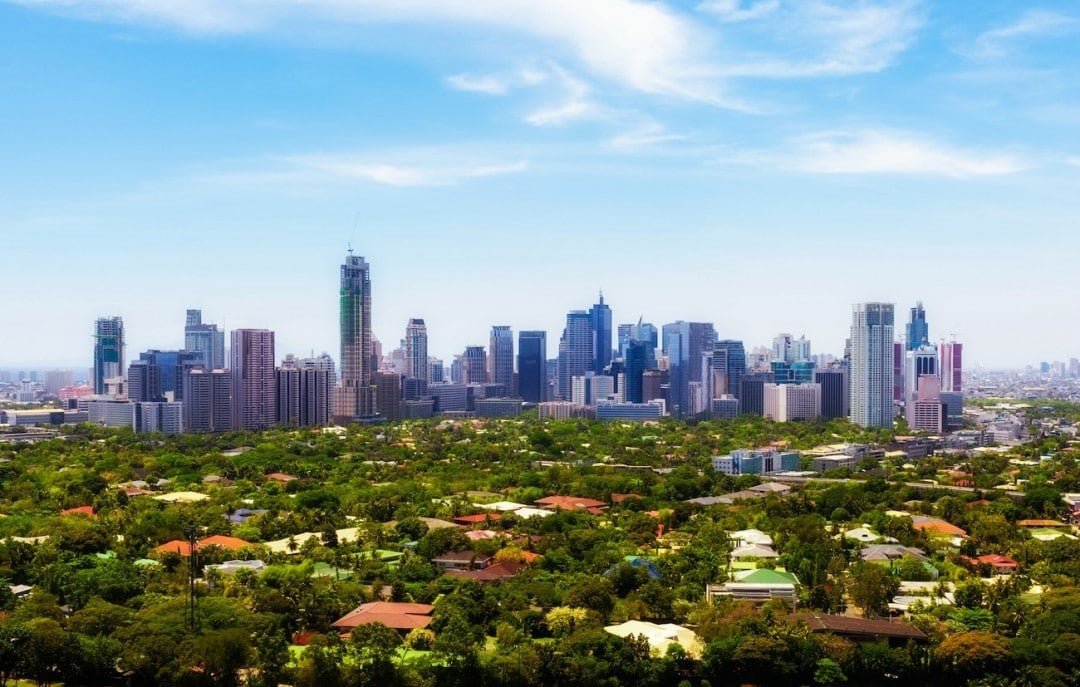
Manila; concrete jungle meets forest?
If you do choose to spend some time exploring the bustling Manila, check out Fort Santiago. Around seventy five pesos to get in, the Fort guards the entrance to the Pasig River with an oasis of gardens, plazas and fountains leading to its arched gate and lily pond. Explore the fort inside and even head down to the creepy cell blocks or relax in the museum. It's essentially a shrine to The Philippines national hero, José Rizal. You can easily kill a day here without getting bored, and I highly recommend checking this out.
Want more history about The Philippines and the people? Check out the National Museum of the Filipino in Manila. It costs around a hundred and fifty pesos to get into this museum and it's worth it. Since 1998, the National Museum has been restoring and safeguarding important cultural values, sites and reservations throughout the Philippines. Super interesting and chilled, and perfect for those history nerds like me!
If you want to party and meet lots of locals, Manila is a good place to start. While a bustling capital, Manila is still safe to visit and an awesome place to let loose a bit. It's also the perfect hub to fly anywhere you want domestically in the Philippines!
Book Your Manila Hostel Here!
Read about more amazing Manila hostels…
And the coolest places to visit in Manila.
Plan the perfect itinerary for Manila.
Or book a beautiful Airbnb in Manila instead!
Backpacking Mt Pulag
A six-hour bus journey from Manila is the legendary Mt Pulag, and the truly stunning sea of clouds. Not quite a mountain, the trek to the summit is typically done over two days and is very, very easy. Marked by clear trails and signs, you'd have to be really trying to get lost. Mount Pulag attracts hikers from all over the world.
The third highest peak in the Philippines standing at 2,922 metres above sea level, you know it's going to offer some epic views at the top. You are technically 'not allowed' to hike this mountain without a guide. I booked my Mt Pulag trip through Travel Cafe, the cheapest and best tour guides out there. You'll likely need to base yourself in nearby Baguio for at least one night or you're going to be knackered!

Above the clouds in a bin-bag and a stolen blanket... I was fucking freezing
It's not just the beautiful sea of clouds that attracts people to climb Mount Pulag's summit... Have you ever seen the Milky Way Galaxy at dawn? I hadn't until waking up (super) early, hiking to the summit and being greeted with the most incredible sky I'd ever seen. No wonder they say to do this hike over two days... Hiking under the Milky Way Galaxy and eating breakfast as the sun pushes through the sea of clouds was one of the best things I experienced backpacking the Philippines.
Backpacking Sagada
Sagada is a four-hour bus ride from Baguio or overnight from Manila. Welcome to the adventure capital of the Philippines! This is hands down one of my favourite places I explored in all of The Philippines.
I crashed in Olahbinan - an amazing place with warm vibes and an epic view from the balcony. It's opposite Kimchi Bar; which happens to be the best place to hang in the evenings for a beer or three...
Sagada has everything, from relaxed day hikes into the hills, advanced treks into the mountains, and for the adventurous, caving. Travelling to and exploring Sagada's secrets is a recommendation for anyone visiting the Philippines.
The Crystal Cave is an explorer's paradise. Spend the day squeezing through tight black holes, climbing raging waterfalls, abseiling further into the darkness before being led into another chamber filled with mammoth crystal formations. Expect to pay around 2,500 Pesos to hire a guide to take you through not only Crystal Cave but also the cave link connection. If you are new to caving, I suggest starting the cave link connection, parts of the Crystal Cave are tough.
Want creepy and cool? Check out the Echo Valley and the Hanging Coffins. Paganism before the 20th Century was the prominent religion in The Philippines, and Filipinos believed the dead had to be close to the gods to help reach their final resting place. So, instead of being buried in the ground, coffins were secured to the sides of mountains.
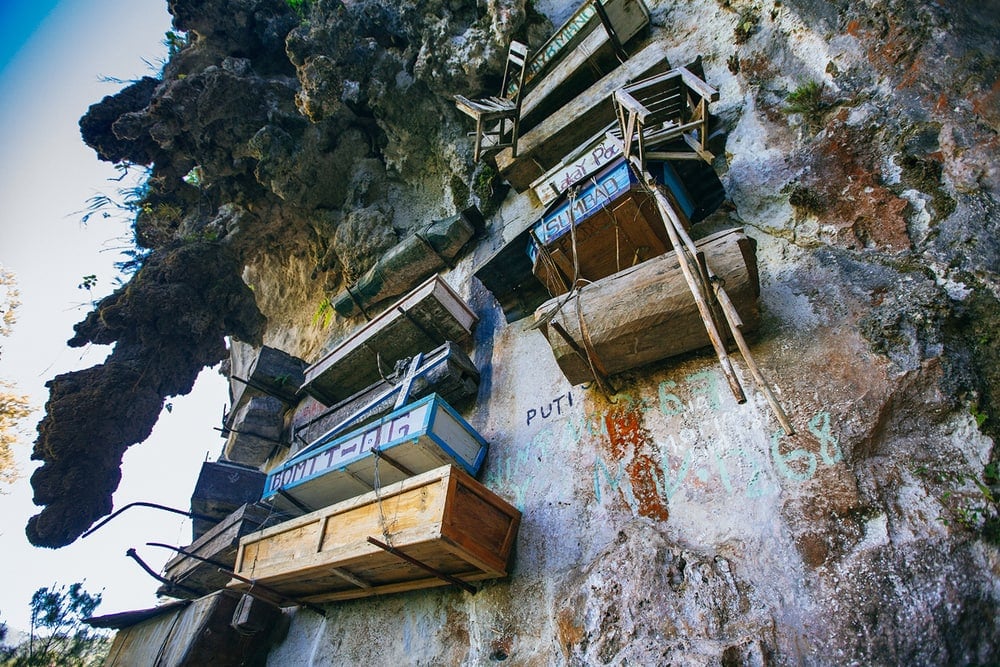
It is said that the higher your coffin, the closer you are to the Gods.
You can hire a guide for 200 pesos to take you in or do the loop in reverse and you won't have to pay to enter... if you get lost though you are pretty fucked so be sure you know where you're going. Today, locals are sometimes still buried in the foetal position in these hanging coffins but it's very expensive - a sacrifice of twenty cows and forty chicken are required - so the practice is dying out.
One of my favourite things to do in Sagada is to simply take to the hills and hike for an afternoon. The trails are so quiet I could venture for a day and see no one, having the countryside all to myself! Stunning views, great weather and deserted trails were the only reasons I needed to venture out to the wilderness.
I spent a lot of time staying in the Sagada area, and I recommend it to everyone backpacking the Philippines who wants to escape the tourist trap. Those looking for adventure should head here.
Backpacking to Find Whang Od
Whang Od is a person rather than a place; this lady is the last Kalinga tattoo artist to hold the title of Mamababatok. Tattoo lovers (like me) can't resist the opportunity to receive a tribal tattoo from Whang Od: she's a living legend. Hop on a few Jeepneys (ride on top, the views are awesome) from Sagada and head towards the Kalinga Jungle.

This lady is a living legend and gives epic Tatts!
Trekking deep into the jungle you'll come across the tribal village where Whang Od lives with her family and friends. Please treat this wonderful lady and her accommodating neighbours with the respect that they deserve.
Don't expect to turn up, pay, and get inked. Tattooing is serious business here and she will only tattoo some people!
Backpacking Puerto Princesa
From the Kalinga Jungle, I travelled to Manila to catch a cheap flight to Puerto Princesa; the gateway for Palawan and the underground river. I spent a few days here visiting the underground river.
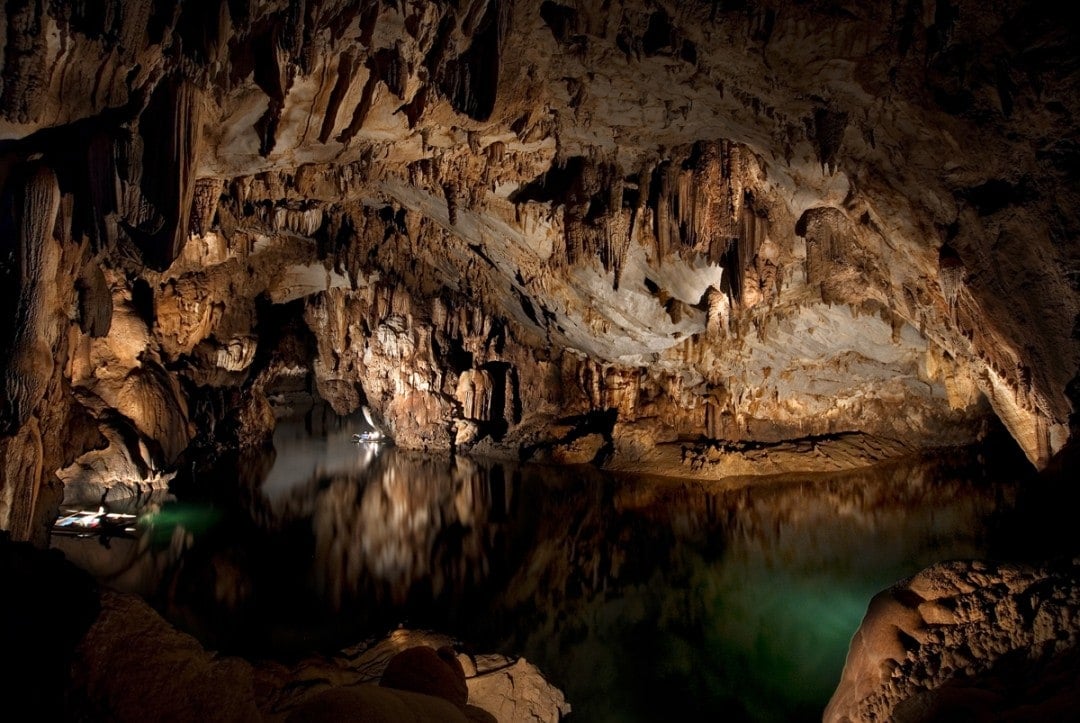
The awesome Sheebang Hostel was a great place to meet some more backpackers! It was beautiful, there's no denying that. Floating underground, blue water and waterfalls were just incredible, but the amount of people that flock here didn't make me want to hang around for long...
Puerto Princesa itself is a bit of a concrete jungle. While backpacking in Palawan I used it as a base to get to the national park and islands nearby. Unless you are a massive foodie (good restaurant culture here) move on quickly...
Backpacking Port Barton
Does the idea of white beaches, crystal clear water, small seaside towns, fresh fish feasts and camping on the beach sound like heaven to you? Well, that is just what Port Barton is. Seriously, it's one of my favourite Philippines backpacker spots. It is a little bit of a mission to get here from Puerto Princessa; I screwed it up and ended up paying through the nose to catch a boat after being dropped in the middle of nowhere by an unfriendly bus driver.
You can catch a bus all the way to Port Barton from either Puerto Princesa or El Nido. Just beware the journey rather bumpy; however, they're currently building a proper road which should be finished shortly. Your other option is to catch a ferry here from Sabang, where the Puerto Princesa Underground River is located.
Port Barton itself is well worth the effort though; a sleepy fishing village just a stone's throw away from uninhabited islands where you can snorkel and even stay overnight.
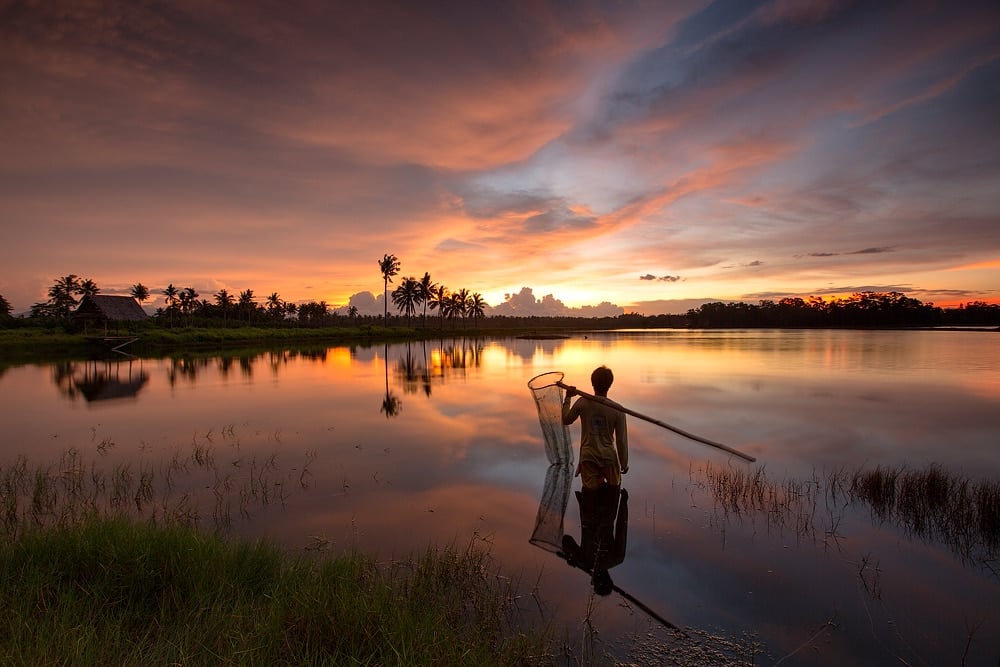
Rural areas in The Philippines have the best sunsets
Gaga, a local fisherman, can hire out tents and will arrange for you to crash on an island for a night, complete with a cooked fish dinner, for as little as $30 a person. You can reach him on (0949) 467 2204 - Tell him I sent you and he will reward you with one of his legendary smiles. What's better than this, seriously?
If you're not keen to camp, there are lots of cheap places to crash in Port Barton, but I recommend blowing your backpacker budget one night and heading out to White Beach. A small resort, totally deserted with gorgeous beaches, crackling bonfires and swaying palm trees; making for a magical evening! It's possible to walk here from the main beach, it only takes around two hours. Sunshine House, on the main beach, has good food, fast internet and cheap rooms.
Backpacking El Nido
El Nido is one of the most popular spots for those backpacking the Philippines to visit. The beaches are known for their epic parties, white sand, and blue waters; everybody ends up at visiting El Nido one way or another...
Head out on one of the epic island hopping cruises, show off your backflip skills jumping from the boat into crystal clear waters below. Snorkel the reefs or if you dare, swim through the underwater caves found in the lagoon. The underwater caves are hard to find, so ask the local lads to show you; it's in the lagoon and although dangerous is a lot of fun.
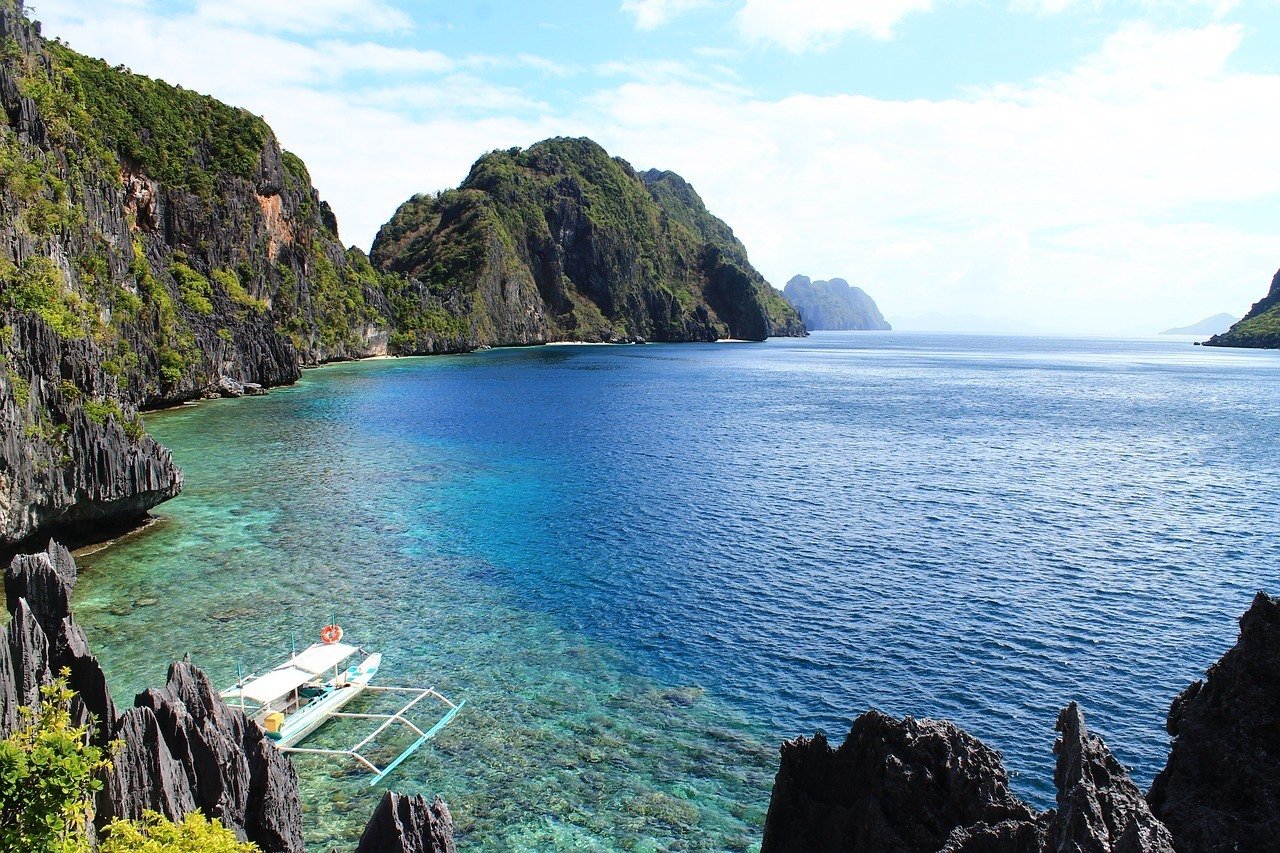
El Nido is a paradise.
Fed up of Water sports? El Nido is one of the best places in The Philippines to climb. The cliffs overhanging the ocean offer so incredible views from the top which even the beginner climbers can enjoy. Check out Taraw Peak, one of the coolest climbs in El Nido.
If you can afford the expensive boat ride, diver fanatics should make their way to Tubbataha Reef Marine Park, known for its reef and pelagic marine life. .
There are tonnes of epic backpacker hostels in El Nido, HOWEVER, you will have to book in advance in high season as it's super popular. El Nido is super easy to get to, you can get direct transport here from Puerto Princesa & Port Barton or a ferry from Coron.
Backpacking Coron
Named one of top dive spots in the world, Coron is popular for its World War II wreck diving. In September 1944, a fleet of Japanese ships hiding in the harbour were sunk in a daring raid by the US navy. The result is around ten well preserved underwater shipwrecks surrounded with coral reef: a divers paradise!
For those not keen on exploring these wicked wrecks, Coron is a great place to kick back with a beer or two for the day. There are numerous chill places to stay in Coron and a lot of cool areas to explore.
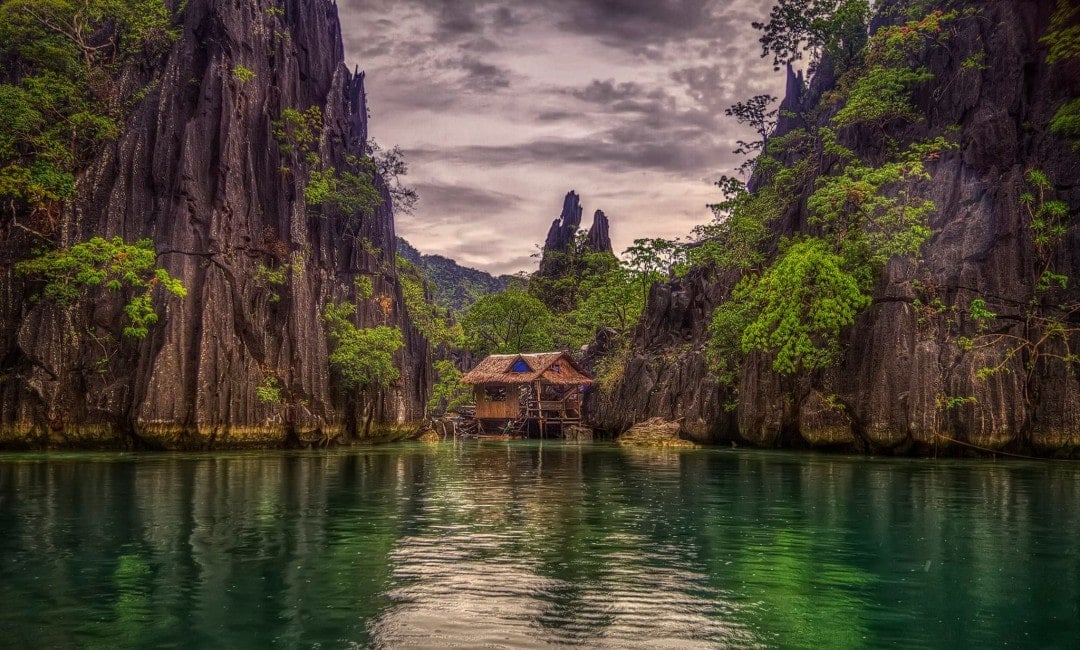
Yeah... Coron is a paradise too
You get to Coron from El Nido by ferry, which takes around eight hours or fly directly here from Manila or Puerto Princesa. Flights are cheap if you book in advance, otherwise get your haggling game on! I got the price down to a thousand pesos, way cheaper than advertised!
Explore Coron by motorbike and see it's beauty. There are heaps of things to do in Coron, but diving was what attracted me here!
Backpacking Legazpi
Legazpi is home of the most perfect cone-shaped volcano in the world, Mt Mayon, & used as a gateway to dive with the Whale Sharks in Donsol. You can hike to the summit of Mt Mayon, but it's quite a difficult climb. Some companies offer an extremely expensive 2 day expedition, however, it does seem possible to climb it yourself too. If hiking isn't your thing, hire an ATV & fang around the base of the volcano looking for wicked viewpoints like at Sumlang Lake.
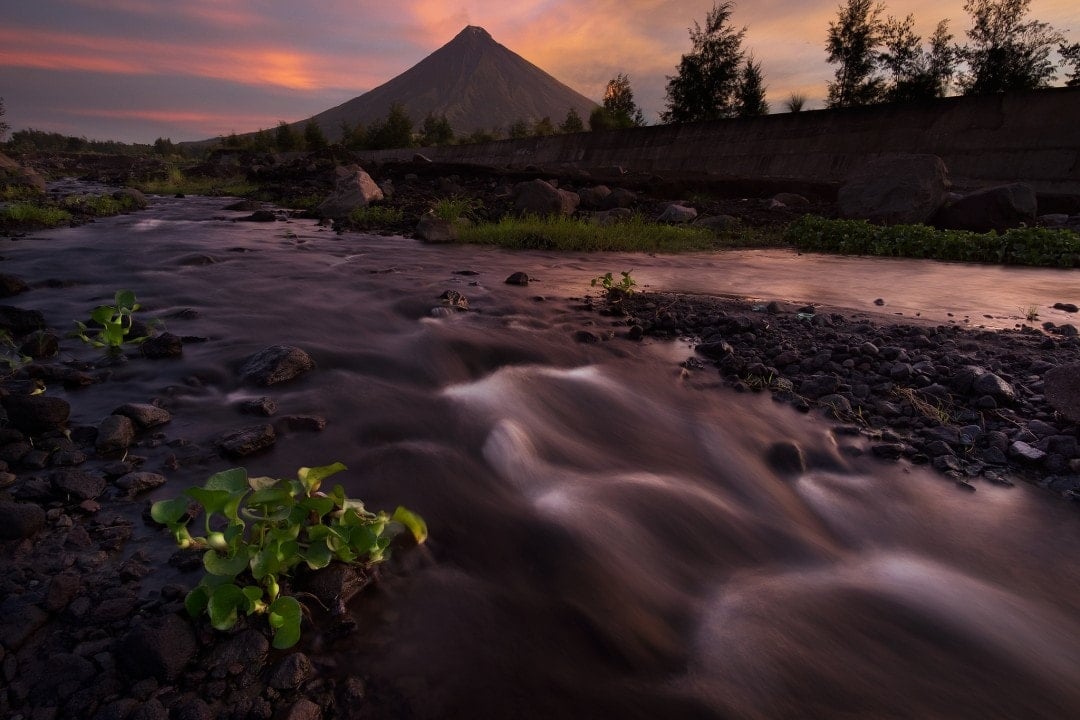
The Philippines has no shortage of epic hikes
The most popular viewpoint of Mt Mayon is Lingnon Hill, but it's pretty touristy. To get here on public transport, catch a loop 2 Jeepney from the main road in town. It drops you near the top of the hill & will only set you back 10p.
The Cagsawa Ruins are pretty cool to check our while you're here. They're the remains of a small 18th-century church village after the huge eruption of Mt Mayon. I stayed at Mayon Backpackers Hostel which has a cool view from the rooftop & even has a kitchen to cook your own food. Pretty much all the flights here go via Manila, check out Cebu Pacific for cheap sale deals.
 Backpacking Donsol
Backpacking Donsol
It's super cheap to free dive with the whale sharks and only sets you back $25 USD, including boat hire, environmental fee & snorkelling hire. It was a magical experience swimming alongside the majestic whale shark which can grow as long as 18m!
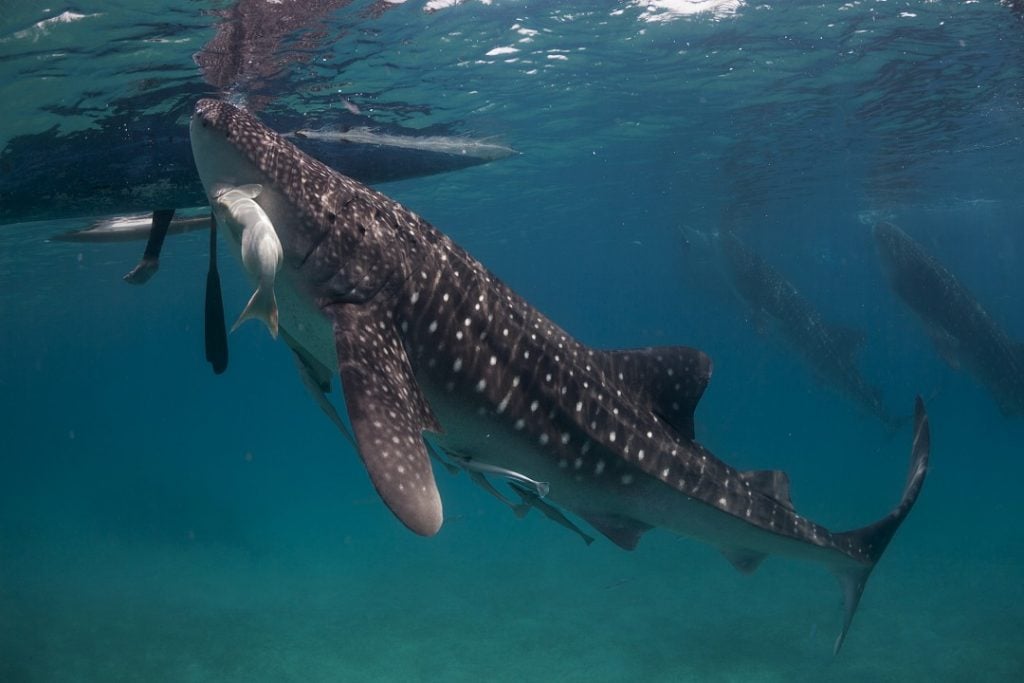
One of the few places in the world where seeing a whaleshark is almost guaranteed
Diving in Donsol is also quite popular. particularly in the Manta Bowl where you can see both manta rays & whale sharks. However, it is a decent boat ride to get there & can be pricey if you're diving solo. Your best bet is rallying together a few divers & sharing the cost of the boat rental.
To get here from Legazpi is super easy: just go to the bus station & catch the Donsol Bus. It takes about 2 hours & costs only 75p. The cheapest way to get to Cebu from Donsol is by local ferry from the Pilar Port. This will take you to Masbate, where you change to a night ferry onwards to Cebu City. All up the ferry ride should cost just under 100p. If you prefer to fly you have to head back to Legazpi & fly via Manila as there are no direct flights to Cebu.
Backpacking Cebu
Cebu city is much like Manila, but it’s smaller & the traffic isn’t as bad. I’m not the biggest fan of big cities, so I didn’t enjoy the city itself so much. The best area of Cebu to stay in is the south, and you’ll probably need around 5 days to a week to travel & see everything. You can fly directly to Cebu from either Manila or Coron; however, your best & cheapest bet is to catch a ferry from Donsol.
I’d definitely stop into Dalaguete, also known as “little Baguio” and is renowned for its cool climate, vegetable crops & has a beautiful viewpoint at Osmena Peak. Head to the Cebu South bus terminal & catch a 2 hour bus to Dalaguete; it should cost about 100p.
If you’re a conscious traveller & wish to balance travelling & the need for the environment, don’t go to Oslob. Yes, it’s famous for swimming with Whale Sharks, but no, it’s not good for the animals or their environment.
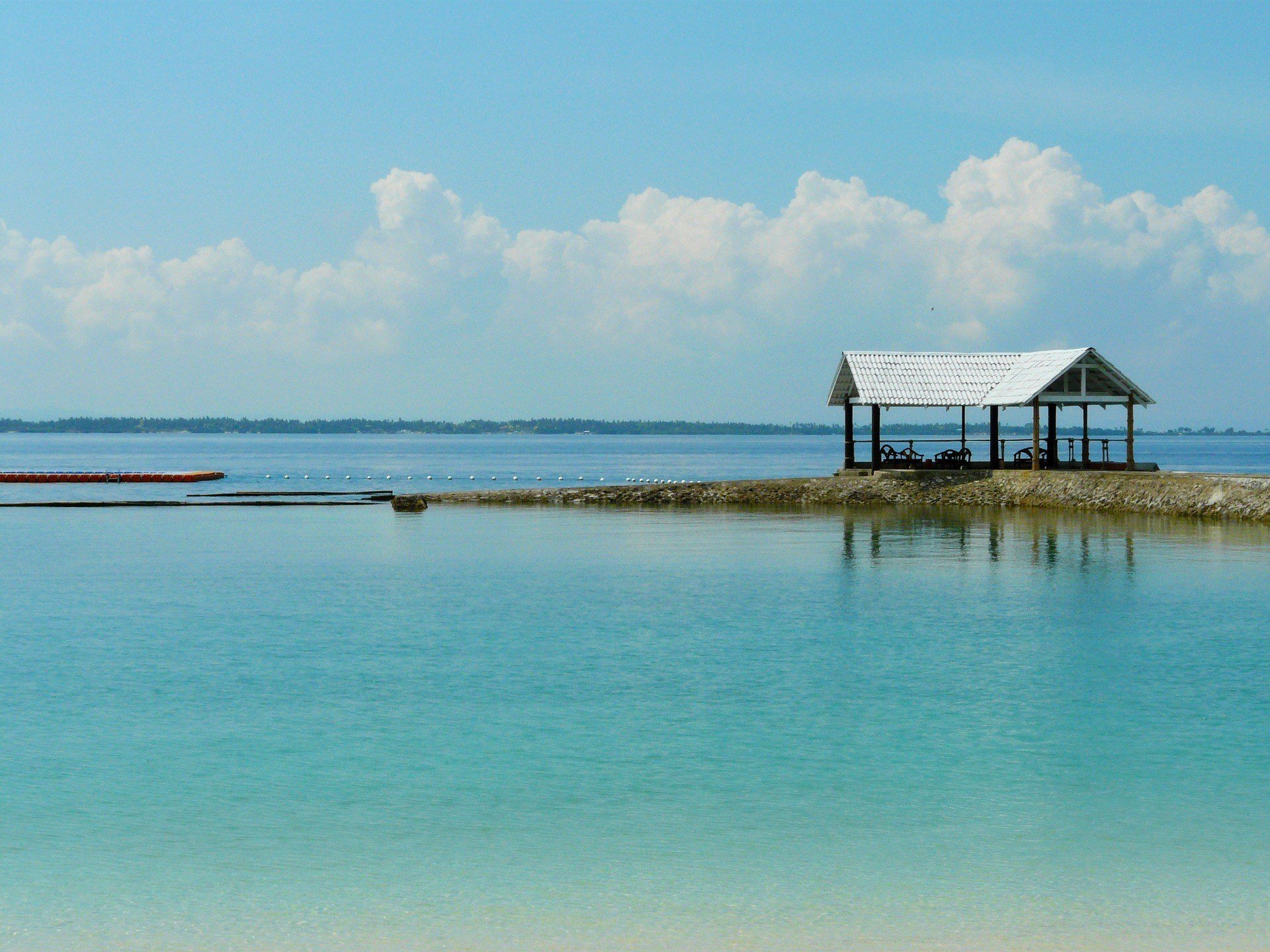
Did someone say... more paradise!
If you’re in Cebu chances are you came to see the incredible Kawasan Falls. Badian is located 98km southeast of Cebu & is well known for its thrilling canyoneering experience. Most backpackers do either a day trip, or canyoning tour finishing up in Kawasan Falls. You can catch a habal habal from Dalaguete to Kawasan Falls/Badian, for 200p per person, entry to the fall is only 30b.
Moalboal is south of Badian & has some of the most incredible dive spots & coral reefs. It’s a chilled laid back beach town 2.5 hours south of Cebu city. You can catch a bus directly from Badian or from the south bus terminal in Cebu city for 200p.
Book Your Cebu Hostel Here!
Stay in a killer hostel in Cebu!
Visit Cebu’s coolest highlights.
Craft an ultimate Cebu itinerary!
Or book a private apartment in Cebu.
Backpacking Siquijor Island
Siquijor Island is absolutely beautiful & used to be known for its witch-like healing practices, though today most healing is done with a relaxing beer on the beach & dip in the ocean.
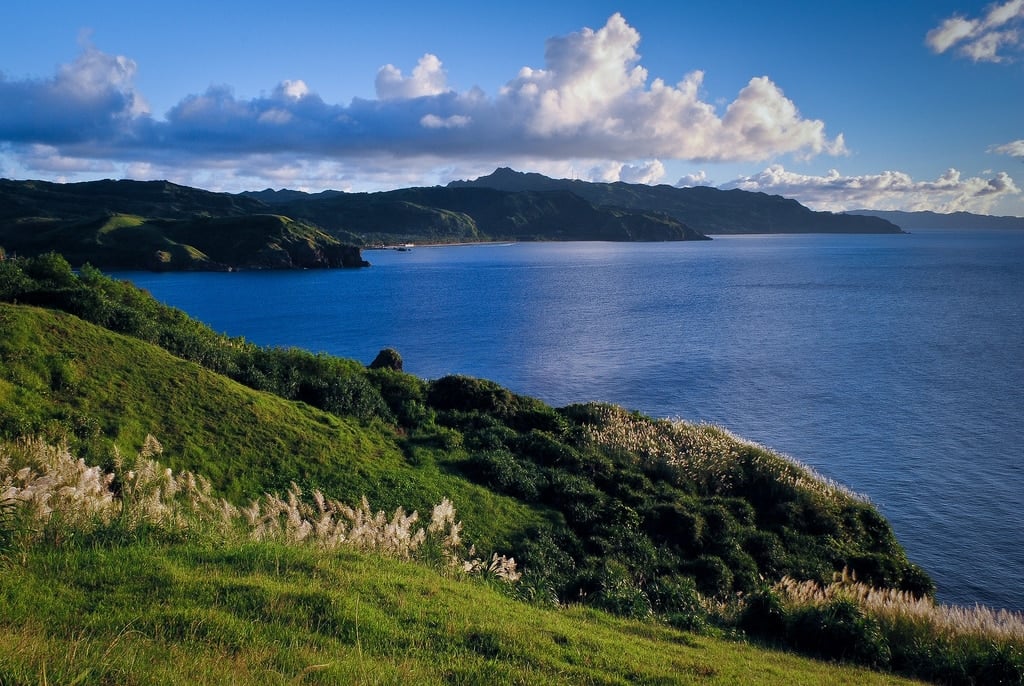
Siquijor is relaxing and has some amazing diving
Siquijor has amazing snorkelling & is great for diving too. There are tranquil waterfalls, caves & forests to explore around the island. Just beware of the sea urchins, especially during low tide, if you get one in your foot they hurt for days!
To travel to Siquijor Island from either Cebu or Moalboal catch a bus to the Lilo-An Port in Santander then take a ferry across to Siquijor. Siquijor is a really laid back chilled island, I absolutely loved the vibes here.
Backpacking Siargao
Siargao known as the surfing capital of the Philippines is located about 800km southeast of Manila, also known as Cloud 9. But you don’t have to be a surfer to enjoy the incredible white sand beaches, soothing lagoons, coral reefs & limestone formations. The town has a chilled, laid back island feel, with beautiful scenery & natural attractions all around the island.
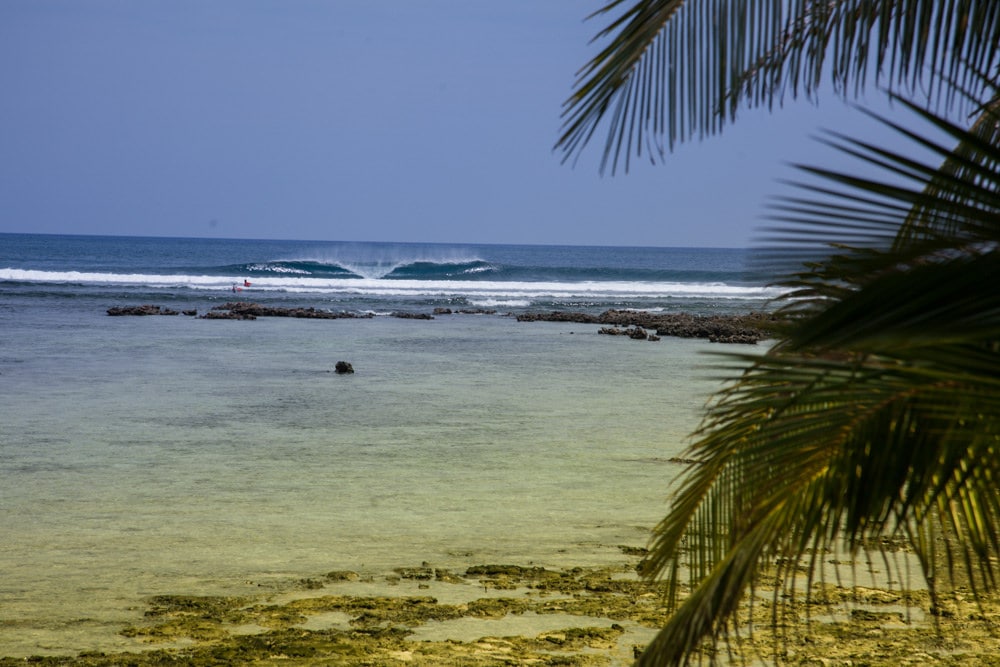
Every surfers dream! Take your pick, left or right?
Most backpackers stay in the General Luna area as it’s a lively part of the island and one of the best places to stay in Siargao. I’d recommend finding a quiet spot around the island to camp for free. Otherwise, there’s a few surf camping grounds & plenty of hostels around the area. To get here & away, you can either fly directly to the island or fly to Siargao city & take a ferry across to Siargao island.
Check Siargao Island Hostels Now!
- Coolest Hostels in Siargao
- Charming Homestays in Siargao
Backpacking Boracay Island
Boracay Island is something that you see on a postcard: beautiful powdered white sand beaches & crystal clear blue water as far as the eye can see. The sunset on the white beach is absolutely breathtaking, the nightlife here is awesome!
It's a pretty commercialised and can be rather expensive, but you can defiantly find cheap backpacking options if you know where to stay in Boracay. The cheapest drinks on the island are at Kurt & Mags on the beach in station 3, cocktails are 45p & beers are 35p!
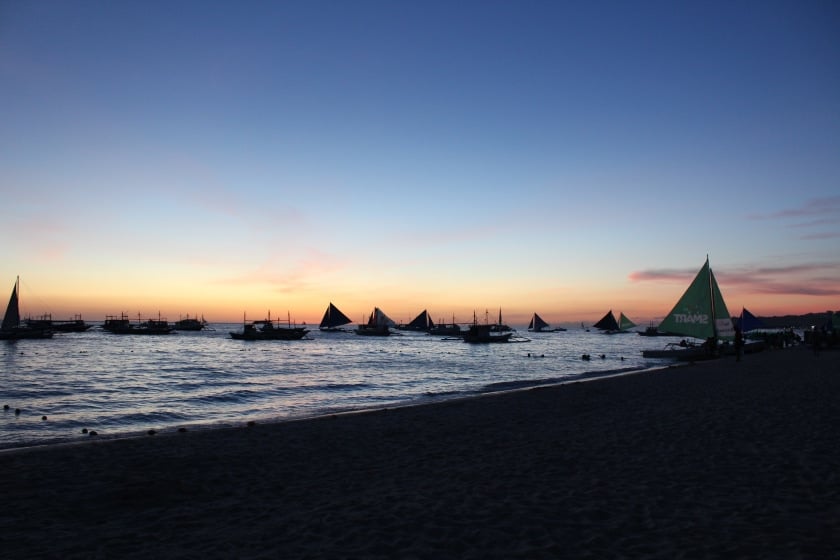
Boracay is a bit touristy - but for good reason!
Make sure you get to Ariels Point! It’s all you can drink & eat while you spend the day cliff diving, kayaking, snorkelling & partying. My favourite place on the island is Spider House. Spend the day paddle boarding, jumping into the water & watching the sunset over the horizon.
To get to Boracay you will either fly into Kalibo or Caticlan airport & get the ferry over to Boracay Island. You can snag cheap flight for around $40 USD & the ferry from Caticlan Pier is 200p.
Backpacking Batanes
Batanes is pure paradise and so much more accessible to backpackers these days. The increase in daily flights heading to Batanes have led to promo fares popping up with most budget airlines. If you get your flight on sale, it’ll set you back around P500 from Manila, so it’s not that expensive to get here anymore.
You can explore the North & South of the island by tricycle for P200 an hour, or hire a bicycle or motorbike. Make sure you visit Sabtang Island; you’ll probably have to get a tour so shop around & find the best deal. Its super beautiful in Batanes: the beaches have white sand, the viewpoints are incredible, and blue turquoise water is inviting.
There aren't any hostels in Batanes, but you should be able to find some local houses.
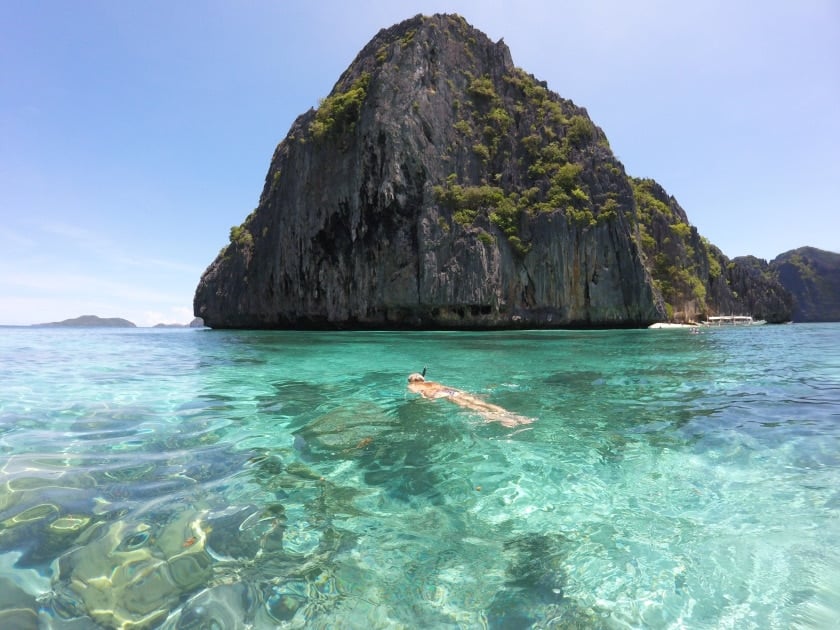
Photo credit: Honeymoon Backpackers
Backpacker Accommodation in the Philippines
In terms of finding accommodation in The Philippines, you have a lot of options.
Book Your Philippines Hostel Here!
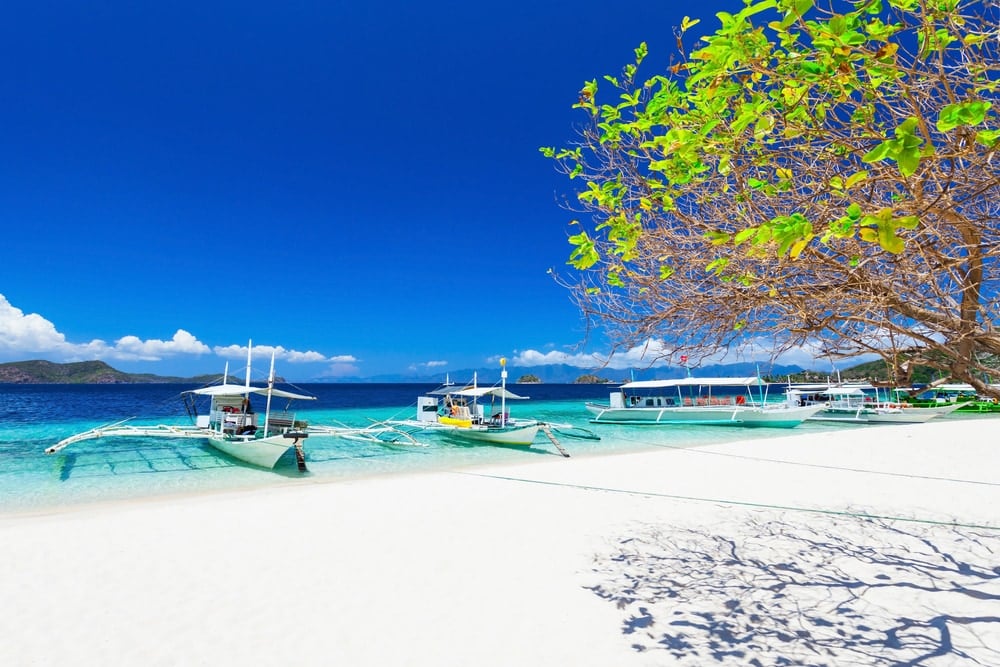
El Nido, Palawan. A highlight of The Philippines
Where to Stay in the Philippines
| Location | Accommodation | Why Stay Here? |
|---|---|---|
| Manila | Z Hostel | This was my favourite hostel in Manila. It's got a rooftop bar with DJ & boasts incredible views of the surrounding city. |
| Boracay Island | Mad Monkey Hostel | Super fun party resort style hostel! Massive pool & only a short walk to the beach. I love the Mad Monkey hostels throughout SE Asia |
| El Nido | Our Melting Pot | OMP is a great little hostel with awesome social vibes. It's in a good location just back from the beach. |
| Cebu | Noordzee Hostel | Loved the infinity pool & incredible views! Great location central to sites like Kawasan Falls & whale sharks in Oslob. |
| Siargao | Paglaom Hostel | Awesome chilled hostel with homey vibes. It's the ideal place for surfers & yogi's plus it's close to the beach! |
| Puerto Princessa | Sheebang Hostel | This hostel is wicked, really good social vibes & delicious food. They can organise airport transfers, buses & book your Underground River tour way cheaper than online. |
Top Things to Do in the Philippines
1. Go Snorkelling or Diving
The Philippines is one of the best places in the world to dive under the sea! There are hundreds of sites ranging from reef to wreck diving, the open ocean and night dives too! Plus, Philippines budget won't be blown; it is one of the cheapest places in the world to get underwater for the day! Check out our Diving section at the end of the guide for more specific dive sites!
2. Go Island Hopping
Considering this is a country made up of thousands of islands, it couldn't really be a Philippines trip without hopping a couple islands! Most hostels will offer some island hopping trips. You can choose from a chilled trip or take on one of the Philippines infamous booze cruise island hopping trips! One of the best things to do in this amazing country is to simply go with the flow and head off on an island-hopping adventure.
3. Swim with Whale Sharks
You can snorkel with whale sharks in Donsol! I highly recommend supporting the industry here versus Cebu (where they handfeed the sharks and disrupt the ecosystem and their migration patterns).
 One of the best ways to get to grips with a new culture is through the food! Cookly partners with local cooking schools and restaurants in countries all around the world and is an awesome way to go on your very own culinary adventure. Book a Filipino cooking class here.
One of the best ways to get to grips with a new culture is through the food! Cookly partners with local cooking schools and restaurants in countries all around the world and is an awesome way to go on your very own culinary adventure. Book a Filipino cooking class here.
4. Eat the Local Delicacies
Philippine local delicacies are so good, so cheap, and so weird! The Philippines has the most 'interesting' selection of street food I've ever seen. It's the cheapest way to eat, the most delicious and surprising... watch out for hard boiled eggs called Balut.
5. Go Caving in Sagada
There are so many awesome spots to go caving, but I definitely recommend checking out the Crystal Caves in Sagada.
6. Summit a Volcano
The Philippines geographical location within the Ring of Fire means there are plenty of volcanoes to climb or admire from afar. With 25 active volcanoes to summit, your choices are varied. Climb Mt. Mayon, an active and picture perfect volcano.
7. Swim among the Picture Perfect Lagoons of Palawan
While this area is touristy, there's a reason why. The clear blue and green lagoons will have you wondering how places likes this exist on Earth.
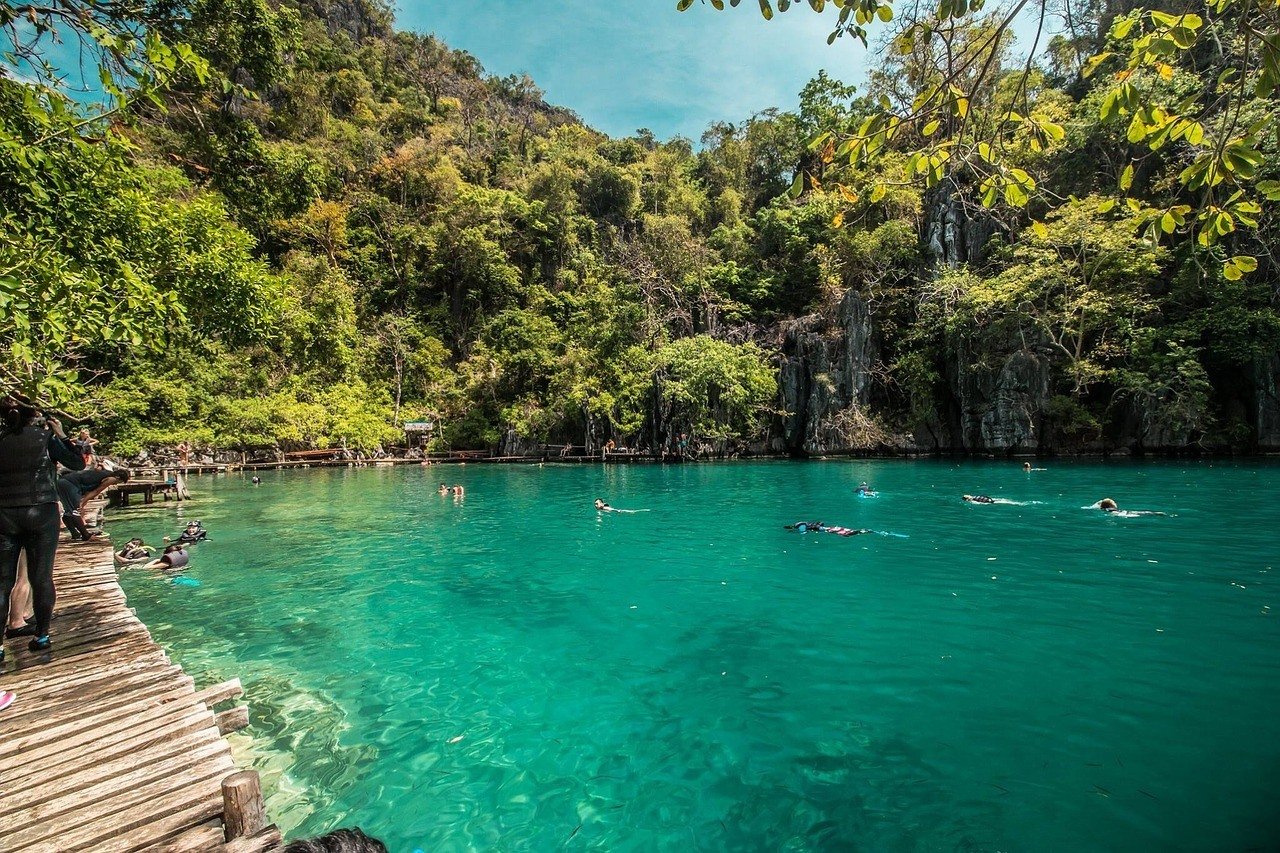
Lagoons of Coron, Palawan
8. Get off the Beaten Path on the Batanes Islands
If you're trying to escape the crowds and immerse in local culture, head to the Batanes Islands, where women wear haystack-like-head gear, and people live in traditional stone-and-cogon-grass houses. You can participate in a local homestay. Make sure to climb and hike in the nearby hills and volcanoes!
9. Explore the Chocolate Hills of Bohol
This island is famous for green rivers, jungle, and yes chocolatey hills!
10. Surf some Waves!
There are plenty of islands to catch some waves! You can head to the Lozon region and stay on Bicol (near Donsol) for some nice waves. Quezon is a good place to learn how to surf. Check out this surf guide for the Philippines to find the gnarliest curls!
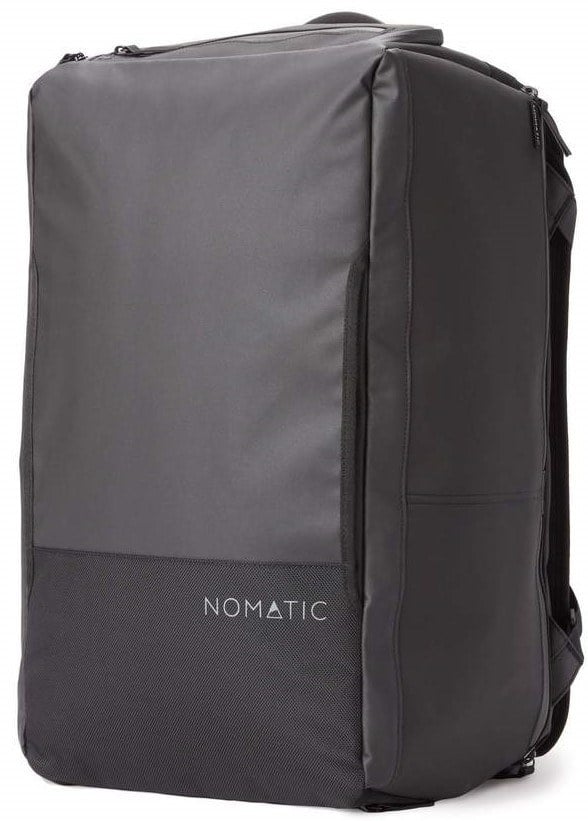
Pssssst! Not picked the perfect travel backpack yet? The Broke Backpacker team has tried out over thirty backpacks this year! Our favourite carry on backpack is the Nomatic Travel Bag.
Read our full review!
The Philippines Travel Tips
The Best Time to Travel to the Philippines
The Philippines, like most Asian countries, has popular seasons and of course, the wet season. Thankfully Backpacking the Philippines is great all year round - even in the rain! Most travellers will flock to the Philippines around January and February when the weather is more reliable and cooler, perfect for travelling around!
Want more specifics? Let me break down the rest of the year for you amigos planning to go backpacking in The Philippines…
- Dry Season (November - April): This is when the weather is at its warmest and the rains are less likely to hit. Expect comfortable warm temperatures of around 30 degrees reaching the mid thirties on the Islands. The hottest months and most humid are March to May, temperatures will reach up to 36 degrees.
- Wet Season (May - October): 'Wet Season' normally put people off; however, this is a great time to backpack The Philippines. The rains aren't constant, normally an hour or so of downpours before the sun drys everything up again. Expect temperatures of around 25 degrees.
- Typhoon Season (June - August): Not the greatest time to backpack the Philippines. Rains are much heavier at this time and typhoons are common. Many flights and ferries will be cancelled or face delays. Avoid some of the more rural islands at this time of year.
What to Pack for the Philippines
The Philippines is less conservative than its neighbouring countries of Malaysia, Indonesia and Taiwan when it comes to clothing. As tourism grows and island hopping and beach parties continue, the dress code is turning more towards the western style we are used to. However, venturing into the less tourist and rural areas it is best to dress more conservatively.
Avoid wearing all black; it's considered a mourning colour, but black in the heat of the sun wouldn't be my first choice anyway... If you are going to visit churches and temples make sure your shoulders, cleavage and knees are covered, otherwise, your packing for the Philippines should definitely be light and breathable.
When backpacking The Philippines, gals, I recommend carrying a Pashmina with you. If you need to cover up to visit that random temple or just need a break from the sun, they are highly recommended by the women-folk.
On every adventure, there are six things I never go traveling without:

1. Security Belt with Hidden Pocket: I never hit the road without my security belt. This is a regular looking belt with a concealed pocket on the inside – you can hide up to twenty notes inside and wear it through airport scanners without it setting them off. This is hands down the best way to hide your cash.
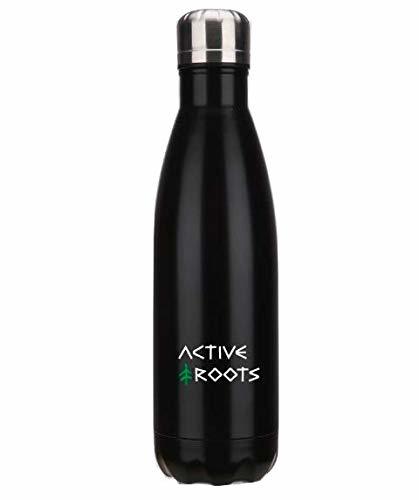 2.Travel Water Bottle: Always travel with a water bottle – it’ll save you money and reduce your plastic footprint on our planet. AR bottle are tough, lightweight and maintain the temperature of your beverage – so you can enjoy a cold red bull, or a hot coffee, no matter where you are. For every AR bottle sold, we donate 10% to PlasticOceans.org – an initiative to reduce plastic in our oceans!
2.Travel Water Bottle: Always travel with a water bottle – it’ll save you money and reduce your plastic footprint on our planet. AR bottle are tough, lightweight and maintain the temperature of your beverage – so you can enjoy a cold red bull, or a hot coffee, no matter where you are. For every AR bottle sold, we donate 10% to PlasticOceans.org – an initiative to reduce plastic in our oceans!
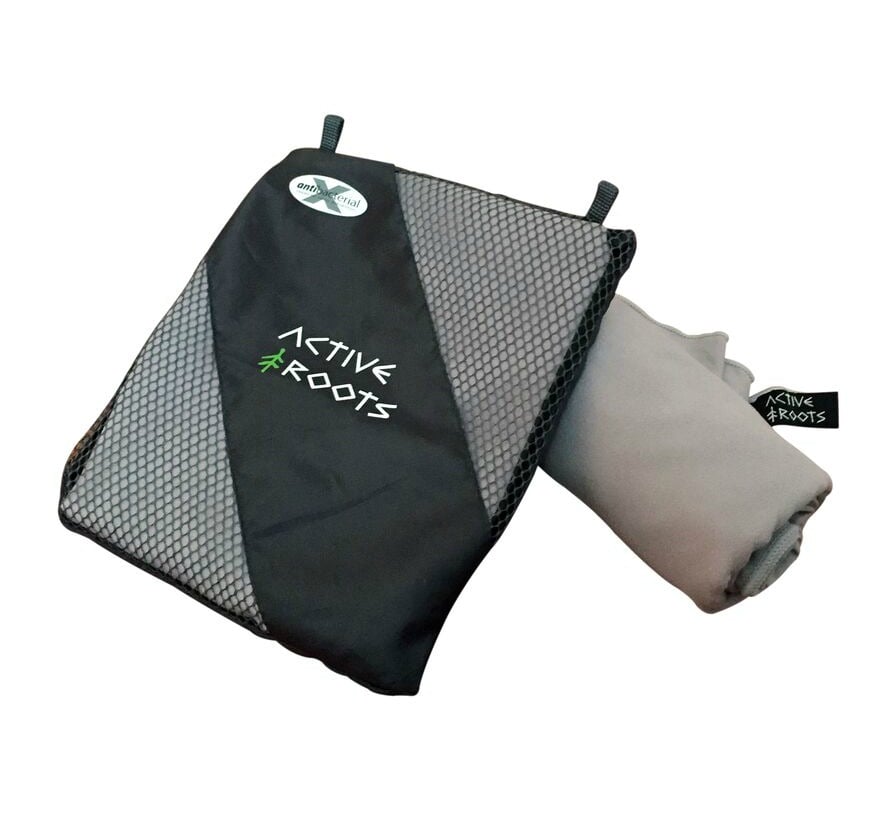
3. Microfibre Towel: It’s always worth packing a proper towel. Hostel towels are scummy and take forever to dry. Microfibre towels dry quickly, are compact, lightweight and can be used as a blanket or yoga mat if need be.
![]() 4. Headtorch: Every backpacker should have a head torch! A decent head torch could save your life. If you want to explore caves, unlit temples, or simply find your way to the bathroom during a blackout, a headtorch is a must. Currently, I’m using the Petzl Actik Core rechargeable headlamp - an awesome piece of kit! Because it’s USB chargeable I never have to buy earth polluting batteries.
4. Headtorch: Every backpacker should have a head torch! A decent head torch could save your life. If you want to explore caves, unlit temples, or simply find your way to the bathroom during a blackout, a headtorch is a must. Currently, I’m using the Petzl Actik Core rechargeable headlamp - an awesome piece of kit! Because it’s USB chargeable I never have to buy earth polluting batteries.
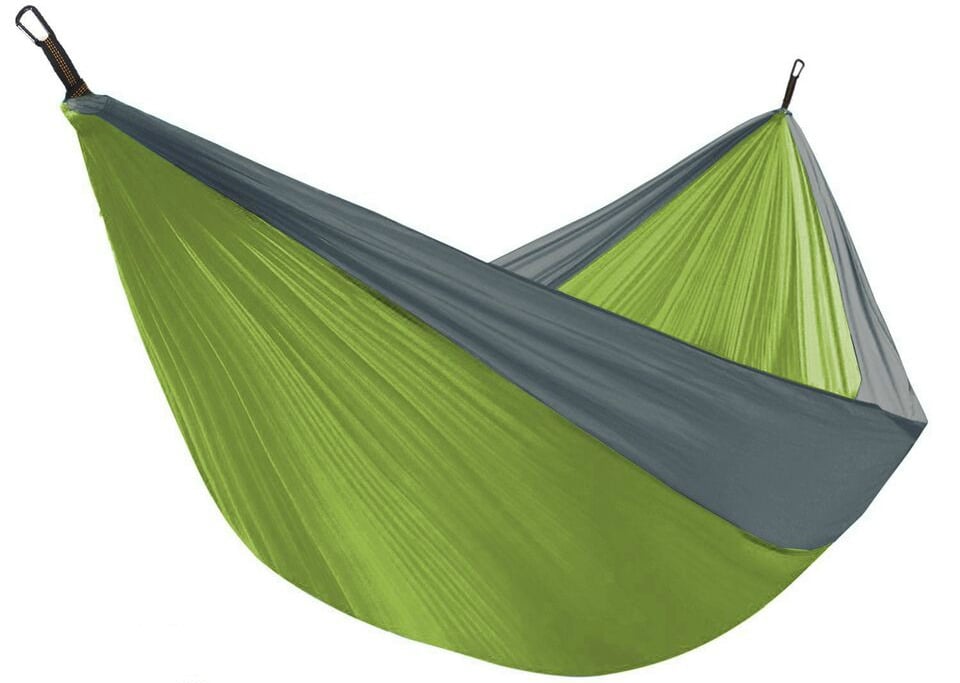 5.Hammock: Taking a tent backpacking is not always practical but hammocks are lightweight, cheap, strong, sexy (chicks dig hammocks) and allow you to pitch up for the night pretty much anywhere. Right now, I’m rocking an Active Roots parachute hammock – it’s light, colourful and tough.
5.Hammock: Taking a tent backpacking is not always practical but hammocks are lightweight, cheap, strong, sexy (chicks dig hammocks) and allow you to pitch up for the night pretty much anywhere. Right now, I’m rocking an Active Roots parachute hammock – it’s light, colourful and tough.
 6. Toiletry Bag: I always travel with a hanging toiletry bag as it’s a super efficient way to organise your bathroom stuff. Well worth having, whether you are hanging it from a tree whilst camping, or a hook in a wall, it helps to have quick access to all your stuff.
6. Toiletry Bag: I always travel with a hanging toiletry bag as it’s a super efficient way to organise your bathroom stuff. Well worth having, whether you are hanging it from a tree whilst camping, or a hook in a wall, it helps to have quick access to all your stuff.
For plenty more inspiration on what to pack, check out my full backpacking packing list.
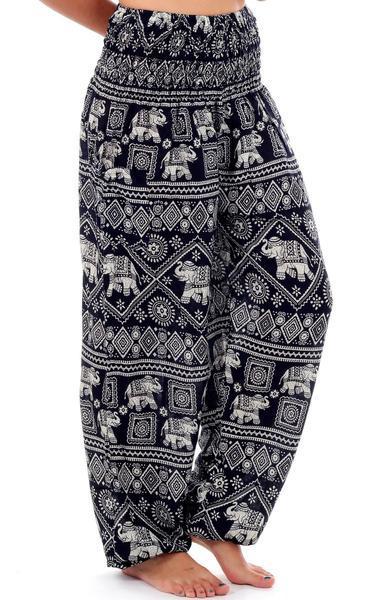 Want to embrace the hippy backpacker style and look? Active Roots hippy trousers are chic, comfortable and perfect for yogis, backpackers and adventurers alike. Help us support the elephant conservation centre in Laos! 10% of your purchase goes towards saving the Asian elephant population so you can look awesome, feel awesome and do awesome – all at once. Pretty fucking awesome right? Use the code ‘ TBB10 ’ for 10% off your order.
Want to embrace the hippy backpacker style and look? Active Roots hippy trousers are chic, comfortable and perfect for yogis, backpackers and adventurers alike. Help us support the elephant conservation centre in Laos! 10% of your purchase goes towards saving the Asian elephant population so you can look awesome, feel awesome and do awesome – all at once. Pretty fucking awesome right? Use the code ‘ TBB10 ’ for 10% off your order.
Books to Read about The Philippines
- The Backpacker Bible – Get it for free! Learn how to ditch your desk and travel the world on just $10 a day whilst building a life of long-term travel with an online income. To inspire and help the next generation of Broke Backpackers, you can now grab ‘How to Travel the World on $10 a Day’ for free! Get your copy here.
- Playing with Water: Passion and Solitude on a Philippine Island: Ever wondered what life on a deserted island would be like? Well, James experiments with this, spending months on uninhabited islands in the Philippines, going back to the basics of survival and diving into the 'real Philippines'.
- History of the Philippines: From Indios Bravos to Filipinos: For the history nerds, this is an awesome background of The Philippines, the culture and what went into making it the incredible country it is today. Seriously, well worth a read!
- The Latinos of Asia: How Filipino Americans Break the Rules of Race: An interesting book exploring how social status will change people's perception of your race, the background into Filipino Culture and how Spanish Colonialism has influenced The Philippines. A real in-depth read but seriously worth it.
- Philippine Folk Tales: Want to hear real life stories before getting there and meeting the people behind them? Check this book out! Filled with stories and tales from local indigenous Filipinos and their lives. I love reading people's tales of a country, it makes me feel connected to the country before I even get there. It's fantastic.
- Lonely Planet Philippines: For those who love to organise the trip while they go, the lonely planet has everything and anything you need to do this. I am not normally one for guidebooks, I often find them a pain to lug around. But they do come in handy when you need a helping hand.
- Lonely Planet Filipino (Tagalog) Phrasebook & Dictionary: If you are one of the minorities who prefer books to apps, then this is a must do. So helpful to know some Filipino - or at least having a way to find the phrase fast - when navigating the rural countryside where there is little English...
- Philippines: Islands of Enchantment: Just hands down a beautiful 'coffee table' book. Wanting some more inspiration before heading on your trip to the Philippines, you'll just need to flip through this!
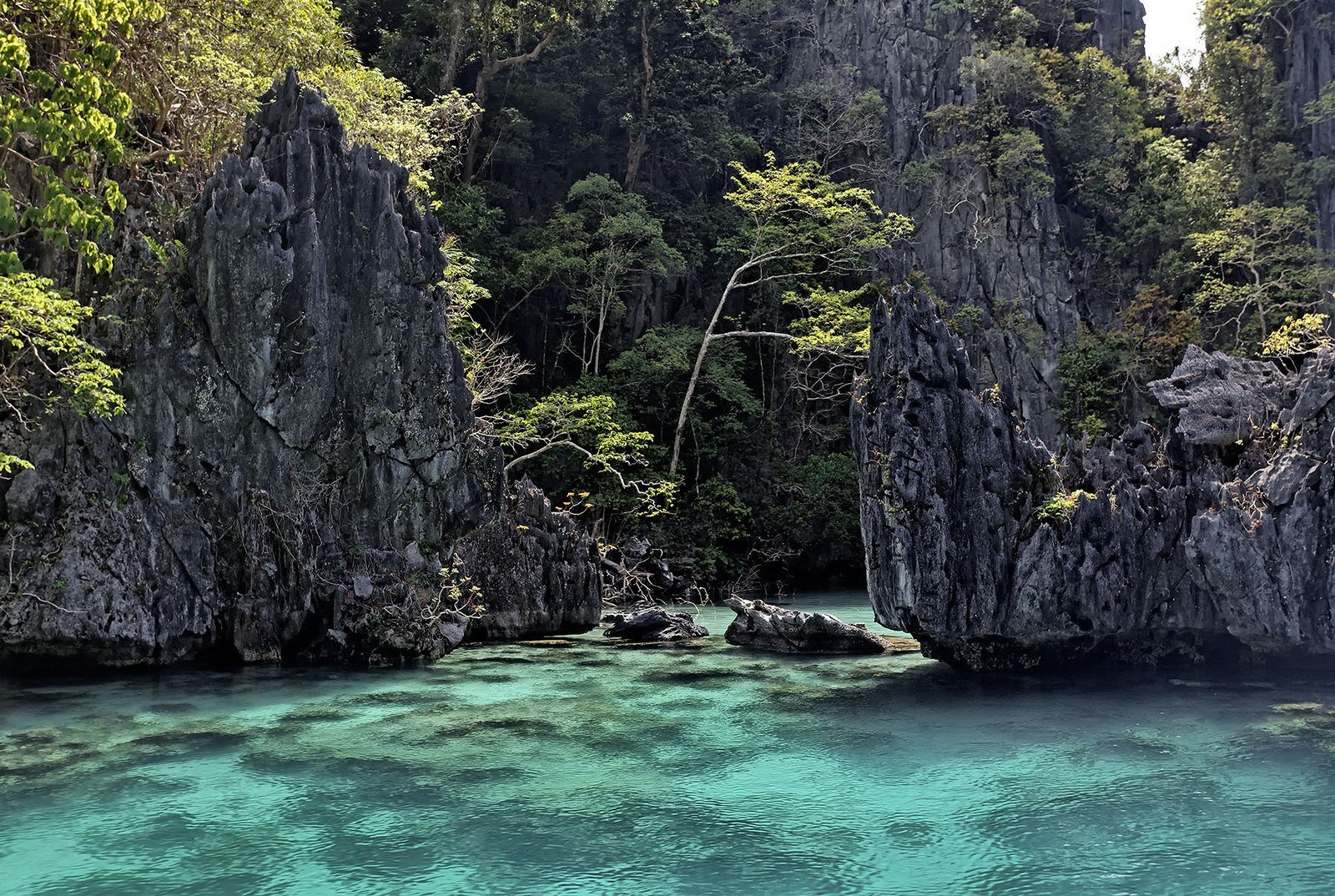
Palawan... you are amazing
Klook.com
Useful Travel Phrases for The Philippines
Most Filipinos speak English quite well in the cities and touristy areas; however, it's nice to know a few Tagalog phrases and connect with the people!
Goodbye – Paálam
How Are You? – Kumusta ka?
My Name Is… – Ang pangalan ko ay…
How much is this? – Magkano to?
Where’s the toilet? – Nasaan ang banyo?
Stop! – Para!
No plastic bag – Walang plastic bag
No straw please – Pakiusap walang straw
No plastic cutlery please – Pakiusap bawal ang plastik na kubyertos
Do you speak English? – Sabihin ang sa English?
I don’t understand! – Hindi ko naiintindihan
Thank You – Salamat
Apps to Download before Backpacking the Philippines
Be warned: free wifi in the Philippines is hard to find and will probably be painfully slow. Don’t use your precious moments downloading apps while backpacking Philippines, prepare before you go!
- Maps.Me – Prone to getting lost or taking that ‘shortcut’ that adds another few hours onto a simple walk? This app is definitely for you. My favourite offline maps app, download your map and route before you venture out to keep you on track while backpacking the Philippines.
- XE Currency – I used this a lot when backpacking the Philippines. It is a great help while calculating expenses.
- HIDE.ME – I always have a VPN ready to go on both my phone and laptop, I personally use Hide Me which is one of the fastest and most reliable options out there. This particular VPN allows for up to five connections which is handy for keeping all your devices connected without having to purchase multiple VPN packages.
- Grab (similar to Uber) – Grab is now readily available in several countries in the region including the Philippines! Grab is hand’s down the best way to get around cities, the price is locked in on the app so you can’t get ripped off and it will always work out cheaper than travelling by taxi or rickshaw. Follow the link for some free Grab credit!
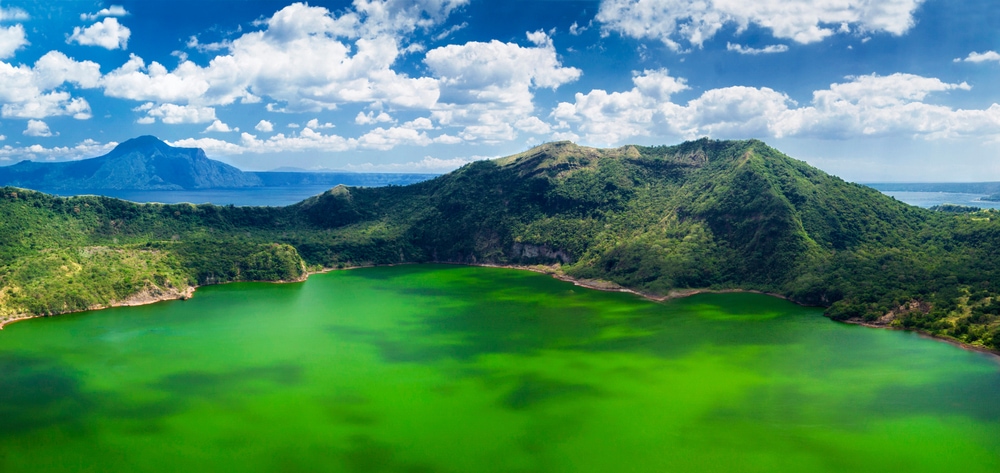
The only problem backpacking The Philippines is needing more time to see it all!
Staying Safe in the Philippines
Generally travelling in the Philippines is very safe in the touristy areas, but there are some places you want to avoid.
The whole of the far south is a no-go zone:
- The area of Mindanao
- The Sulu Archipelago
- And the Zamboanga Peninsula are all considered extremely dangerous due to terrorist activity.
Also, with so many adventures to be had in the Philippines, don't forget to be safe while diving, surfing, trekking, and climbing!
For more safety tips when travelling the Philippines:
- Check out Backpacker Safety 101 for tips and tricks to stay safe whilst backpacking.
- Pick yourself up a backpacker security belt to keep your cash safe on the road.
- Check out this post for plenty of ideas on ingenious ways to hide your money when travelling.
- I also strongly recommend travelling with a headlamp whilst in the Philippines (or anywhere really - every backpacker should have a good headtorch!) - check out my post for a breakdown of the best value headlamps to take backpacking.
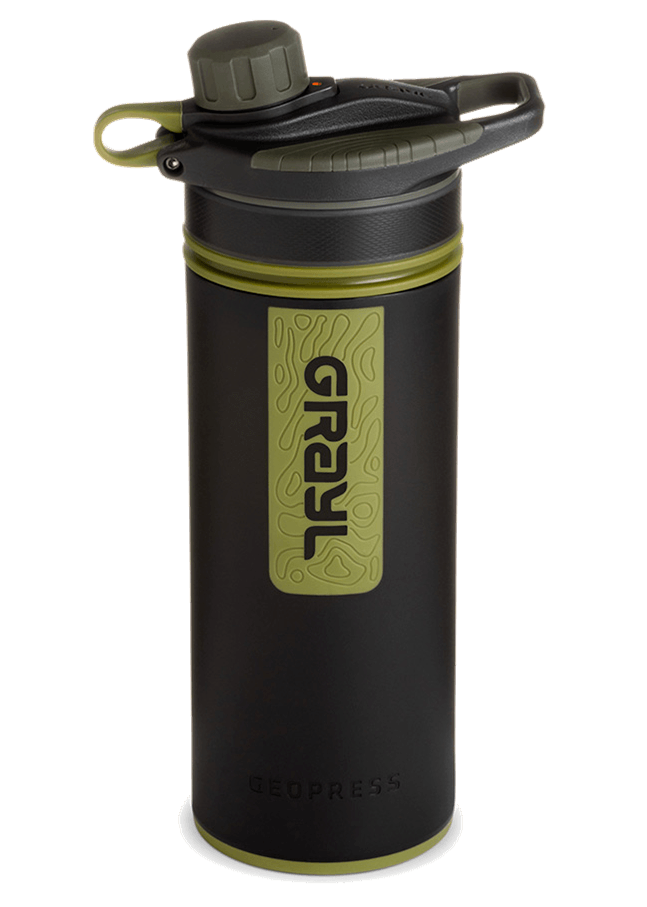 Want to save the world? Single-use plastic bottles are a huge threat to Marine Life – Be a part of the solution and travel with a filter water bottle.
Want to save the world? Single-use plastic bottles are a huge threat to Marine Life – Be a part of the solution and travel with a filter water bottle.
The GRAYL GEOPRESS water bottle is the ONLY all-in-one filter water bottle setup you’ll need. Whether you need to purify the water from a hostel sink in Kathmandu or a stream trickle in the Andes, the Geopress has got you covered.
View on REI View on Grayl
Sex, Drugs, and Rock 'n' Roll in the Philippines
Partying in the Philippines is boats, booze, bikinis, crystal clear water, and some wicked beats. The best parties are normally found outside of the main cities, off land and basically whilst island hopping. It's an essential Philippines bucket list activity and honestly, there's a party to suit all of us. If you want crazy dance beats, sexy dancers and unlimited alcohol or just a chilled vibe on the beach with a smoke, you got it.
On that note; the situation with Drugs in the Philippines has changed big time in the last twelve months. Jail sentences, steep fines, and even death penalties, are not uncommon punishments, and foreigners are not exempt.
Police and other authorities have released strong statements regarding the trafficking and use of drugs in the Philippines. Recently, the police have waged a war on drugs resulting in the deaths of hundreds. Be careful. Just testing positive to a drug reading could land you in jail for 6 months. You’re better off just staying away from drugs altogether in the Philippines. If you are going to dabble in illicit substances, at least read Blazed Backpackers 101 for tips on how to stay safe.
Sex tourism in the Philippines is big and obvious. Prostitution is illegal but it’s definitely around, especially at Go-Go bars. I went to a wrestling match AND these young girls were everywhere. Some of them looked well under the age of 18 and were hanging off 50-year-old men.
Tinder very much works in The Philippines and the locals are... erm, very friendly. Picking up chicks in The Philippines is relatively easy and Filipinas do love to have a good time. Always show respect to local girls when traveling, it's all to easy to break hearts when you're dishonest with your intentions.
Alcohol is widely drank and readily available. The Philippines has horrifically strong Red Horse beer and some tasty rums on offer.
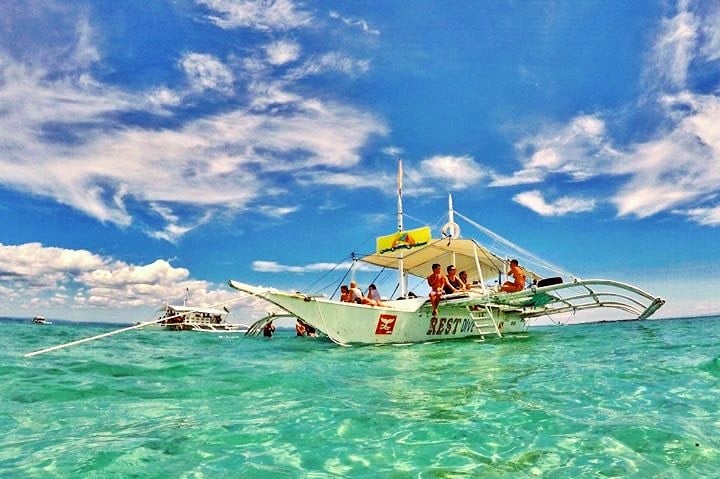
One of the many booze cruises...
Travel Insurance for the Philippines
A wise man once said that if you can’t afford travel insurance, you can’t really afford to travel – so do consider backpacker insurance sorted before you head off on an adventure! Traveling without insurance would be risky. I highly recommend World Nomads.
I have been using World Nomads for some time now and made a few claims over the years. They're easy to use, offer the widest coverage, and are affordable. Also, this is the only company I know of that lets you buy travel insurance after leaving on a trip.
If there’s one insurance company I trust, it’s World Nomads. Find out why I recommend World Nomads, check out my World Nomads Insurance review.
Getting an estimate from World Nomads is simple - just click the button or image below, fill out the necessary info, and you're on your way!

The Philippines Travel Guide - Getting In and Around
Arriving in the Philippines
Flying into the Philippines was incredible. Thousands of Islands surrounded by a beautiful blue ocean looked like the paradise that was promised after all the hype! Most backpackers travelling in The Philippines start off in Manila, the main flight hub. It's likely your flight will land here or at least connect through to one of the many islands.
Flights to The Philippines are becoming more frequent. The cheapest airline to fly with is Philippine Airlines; however, they don't come with the greatest reputation. I guess you get what you pay for, right?
I often find great international deals to The Philippines with China Southern (via Guangzhou) and Emirates (via Dubai). If you're flying within Asia, rejoice broke backpackers, it's so freaking cheap! You can get flights with the likes of Air Asia and Philippines Airlines for as little as fifty dollars!
Entry Requirements for the Philippines
Upon arrival, the majority of nationalities will get a visa allowing one month of travel in The Philippines on arrival. If you know you are going to stay longer than a month, definitely organise your visa before you arrive.
IMPORTANT NOTE: You usually cannot enter the Philippines, or even board a flight to The Philippines, unless you have an outbound flight already booked and can show proof. If you don't know how long you plan to stay, this can be a major pain in the ass... A good way round this is to use this site to get hold of the documentation you need without actually having to pay for a full flight.
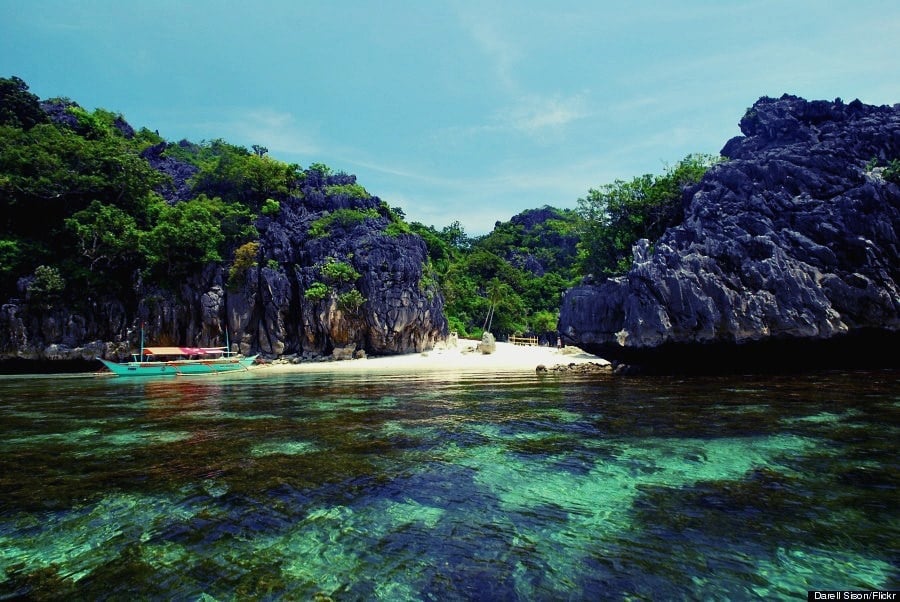
So many hidden spots to explore!
How to Travel in the Philippines
Backpacking the Philippines is easy, even for those with the worst sense of direction! A spider web of bus links, friendly and helpful locals, and all modes of travel offered at super cheap prices mean that getting around the Philippines couldn't be easier! As long as you don't expect air con, you are happy with loud music or movies playing, and a lack of glass windows, your budget Philippines adventure will be a breeze.
You can just hop on a bus without a ticket but if you'd rather book in advance, I'd recommend checking out Bookaway. Rather than just rocking up at the bus stop in the hope they will have space to fit you on, you can book tickets in advance! Using Bookaway you can book cheap tickets for long and short journeys all over Asia! Seriously, this saves so much precious time and confusion!
It's not just buses either - Bookaway can get you sorted with ferry tickets too. Check it out!
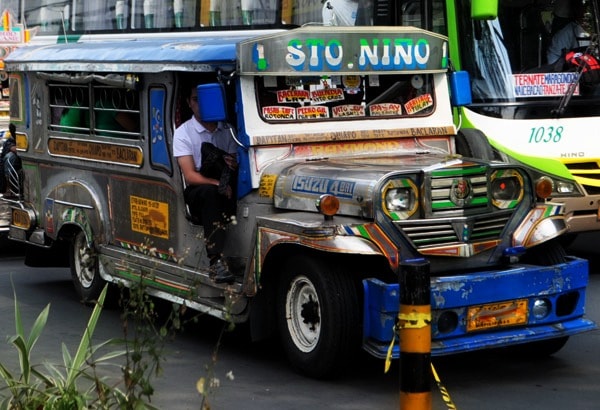
Jeepneys are seriously... awesome!
Hitchhiking in the Philippines
Getting around The Philippines is relatively easy, and with many different modes of transport for all budget levels it seems silly to even consider hitchhiking... Wrong amigo!
Hitchhiking the Philippines is easy if you are hoping to travel a small distance and it's is a great way to meet cool people on the road. Not only will locals pull over to curiously help you on your way, but Jeepneys will often stop as well. Just make sure to let them know you're hitchhiking with no money before you hop in, or you could find yourself in an awkward situation.
Travelling a longer distance? Hitchhiking becomes a little harder. Most locals with their own vehicles are only travelling short distances and those that are travelling longer distances will often look for a bit of cash to help with fuel. If you are planning to hitchhike the Philippines I recommend hitchhiking short distances. If you're travelling longer, hop in a Jeepney.
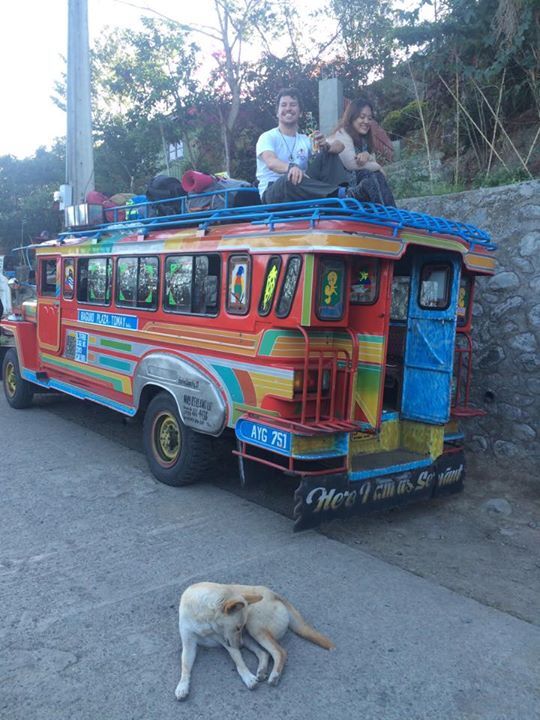
Toploading again somewhere in Baguio
Onwards Travel from The Philippines
Since the Philippines is comprised of islands, the main way to travel onwards is by flight (unless you're a sailor of course!). There are pretty cheap flights from Manila (and sometimes Cebu) travelling onwards in Southeast Asia to countries like Thailand, Vietnam, and Indonesia!
The Philippines Backpacking Costs
The Philippines is a broke backpackers paradise. You can backpack the Philippines for as little as $20 a day. Seriously it's cheap! Obviously, if you splurge for fancy beachfront resorts and classy island hopping tours your Philippines budget may stretch a little. Stick to hostels, street food and the local beer and you will be laughing...
That said, if you're constantly island hopping your budget is going to have to stretch. Places like El Nido and Coron are going to be more expensive. Travelling on shoulder season will save you money too!
A Daily Budget in the Philippines
| Expense | Broke Backpacker | Frugal Traveller | Creature of Comfort |
|---|---|---|---|
| Accommodation | $4-$7 | $8-$15 | $25+ |
| Food | $3-$8 | $9-$16 | $20+ |
| Transport | $2-$8 | $9-$15 | $20+ |
| Nightlife Delights | $1-$5 | $6-$11 | $15+ |
| Activities | $0-$10 | $11-$20 | $30+ |
| Total per day: | $10-$38 | $43-$77 | $110+ |
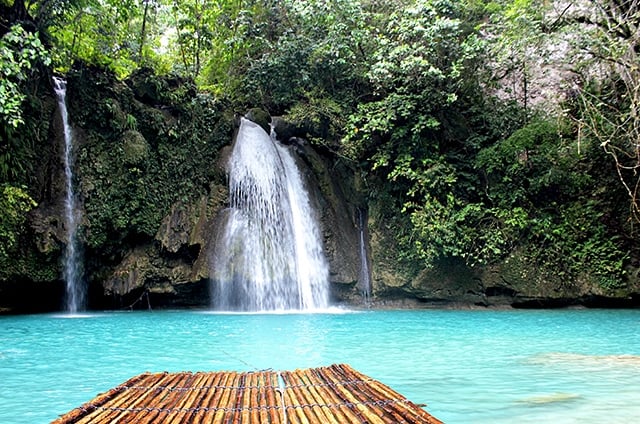
I'll just chill here with a local beer please...
Money in the Philippines
Asia is great for making us broke backpackers feel loaded! The Philippines certainly doesn’t disappoint. $25 = 1,248 Philippine Peso, pretty awesome huh? Especially since the local beer is only forty pesos!

Money,money,money!
You can exchange money in your home country before you begin backpacking the Philippines. However, there is a limit of around 10,000 pesos (around $200) in cash you can bring into the country at one time. I'd recommend exchanging your money once in The Philippines. You'll get a better exchange rate and you won't have to worry about restrictions.
ATMs in The Philippines are found in most places, but it isn't uncommon for ATMs to run out of money, especially on weekends and holidays. You will be charged for using most ATMs (around 200 pesos per transaction), so try to be smart about the amount you withdraw.
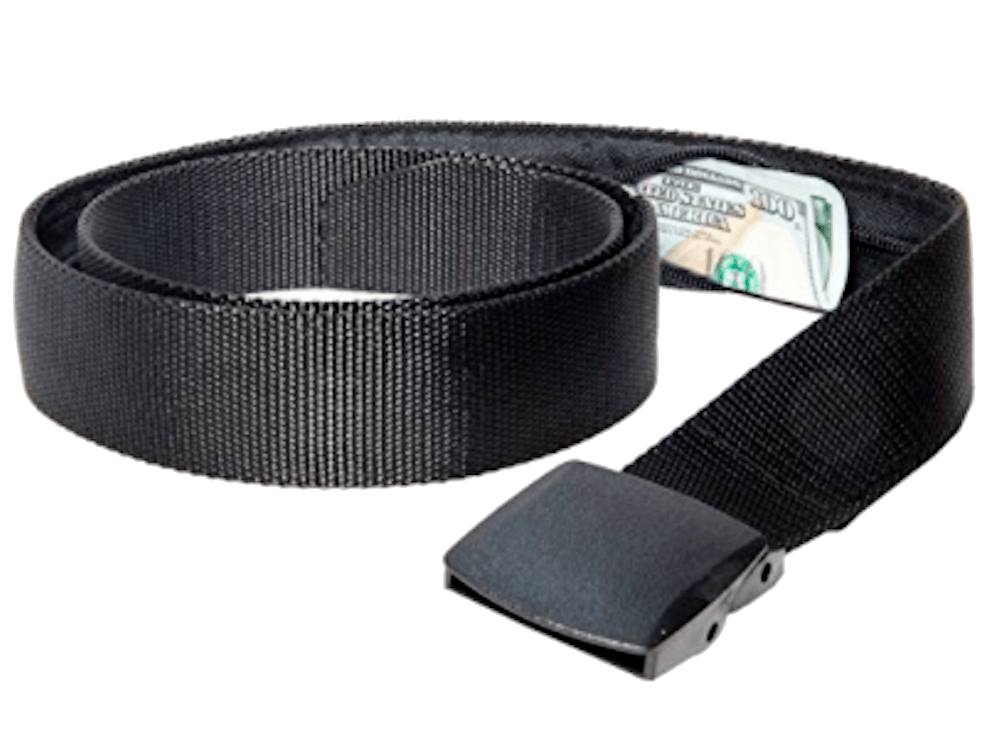
You should always have emergency cash hidden on you – pick up this awesome security belt with its hidden pocket before you travel, it’s perfect for hiding money, a passport photocopy.
GET IT HERE
Top Tips for Visiting the Philippines on a Budget
- Haggle: Want to save money whilst backpacking the Philippines, well get your haggle game on or expect to be ripped off. Haggling is fun and totally normal in the Philippines, so try it! Every penny helps!
- Eat the Street Delicacies: Not only is it delicious, weird and wonderful but it's damn cheap. Avoid the overpriced tourist restaurants and go where the locals go. If you're heading off trekking or on a real tight budget, it might be worth packing a good quality backpacking stove.
- Sleep on the Couch: Couchsurfing is taking off in The Philippines and for good reason. It's freaking awesome! You'll meet a good bunch of locals who, more often than not, are happy to play tour guide and show you some secret spots! It's also well worth packing a tent - check out this post for a breakdown of the best tents to take backpacking.
- Ride the Jeepneys: One of the cheapest ways to get around the Philippines, especially in the cities. It is also the most fun if you're on top. Avoid the tourist buses, save your cash and climb aboard!
- Camp: Take advantage of the warm weather, give camping a go, - hang your backpacking hammock for the night cost-free!
- Pack a travel water bottle: Save money - and the planet - every day!
Joining an Organized Tour in The Philippines
For most countries, The Philippines included, solo travel is the name of the game. That said, if you are short on time, energy, or just want to be part of an awesome group of travelers you can opt to join an organized tour. Joining a tour is a great way to see a majority of the country quickly and without the effort that goes into planning a backpacking trip. However—not all tour operators are created equal—that is for sure.
G Adventures is a solid down-to-earth tour company catering to backpackers just like you, and their prices and itineraries reflect the interests of the backpacker crowd. You can score some pretty sweet deals on epic trips in The Philippines for a fraction of the price of what other tour operators charge.
Check out some of their awesome itineraries for The Philippines here…
Volunteering in The Philippines
Long term travel is awesome. Giving back is awesome too. For backpackers looking to travel long-term on a budget in The Philippines whilst making a real impact on local communities, look no further than Worldpackers. Worldpackers is an excellent platform connecting travelers with meaningful volunteer positions throughout the world.
In exchange for a few hours of work each day, your room and board are covered.
Backpackers can spend long periods of time volunteering in an awesome place without spending any money. Meaningful life and travel experiences are rooted in stepping out of your comfort zone and into the world of a purposeful project.
Worldpackers opens the doors for work opportunities in hostels, homestays, NGOs, and eco-projects around the world. We’ve tried and approved them ourselves - check out our Worldpackers in-depth review here.
If you’re ready to create a life-changing travel experience and give back to the community, join the Worldpacker community now. As a Broke Backpacker reader, you’ll get a special discount of $20. Just use the discount code BROKEBACKPACKER and your membership is discounted from $49 a year to only $29.
Teaching English in the Philippines
Speaking English is a highly-valued skill all over the world. For locals, it opens up whole new worlds of employment opportunities and travel.
Perhaps one of the best options for backpackers wanting to explore the Philippines long-term and experience living in this truly incredible country is to get a Teaching English as a Foreign Language certificate online.
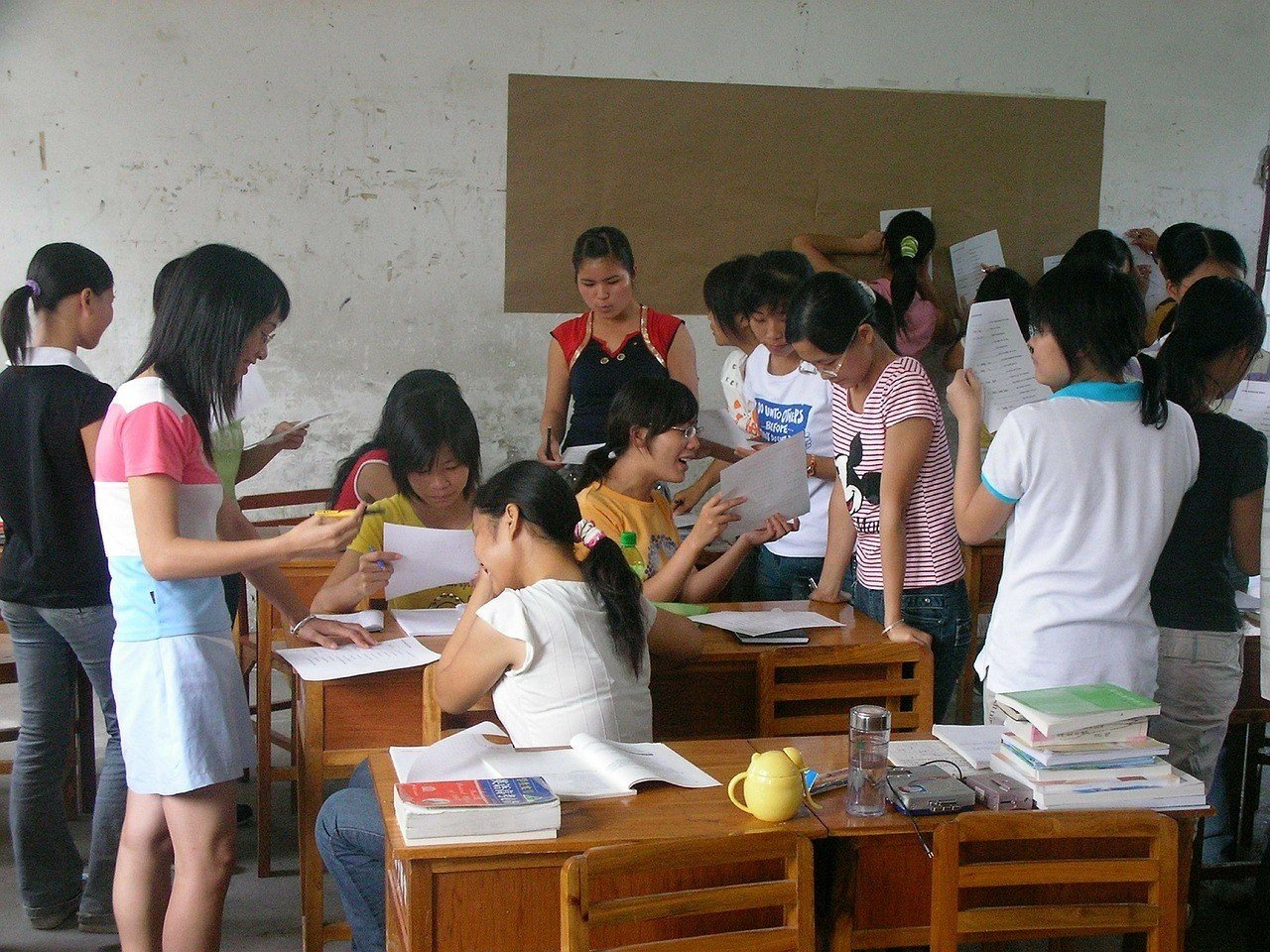
TEFL courses open up a huge range of opportunities and you can find teaching work all over the world. Broke Backpacker readers get a 35% discount on TEFL courses with MyTEFL (simply enter the code BACKPKR).
To find out more about TEFL courses and how you can teach English around the world, read our in-depth report on teaching English abroad.
Make Money Online whilst Exploring the Philippines
Keen to live the digital nomad dream while travelling the world? Damn right you are!
Teaching English online is a great way to earn a consistent income from anywhere in the world with a good internet connection. Depending on your qualifications (or your motivation to obtain qualifications like a TEFL certificate), you can teach English remotely from your laptop, save some cash for your next adventure, and make a positive impact on the world by improving another person’s language skills! It’s a win-win!
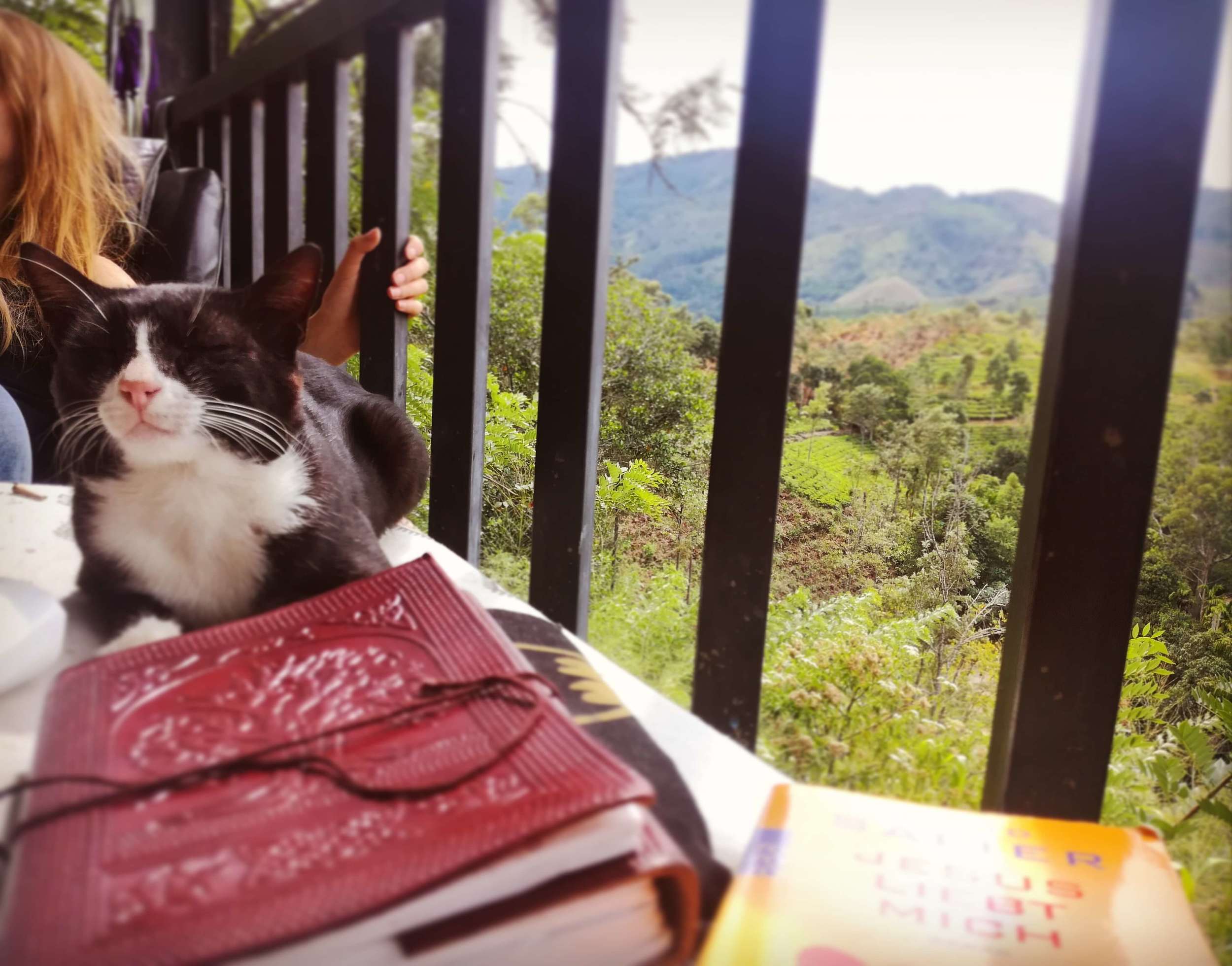
Settling in for a day at the office. | Photo: @themanwiththetinyguitar
Check out this detailed article for everything you need to know to start teaching English online.
Whether you are keen to teach English online or in a foreign country, a TEFL certificate is absolutely a step in the right direction.
Internet in the Philippines
Free wi-fi isn't as common and when you do find free w-fi expect it to be pretty slow. Many of the remote islands will not have any service, so enjoy this time to unwind and unplug!
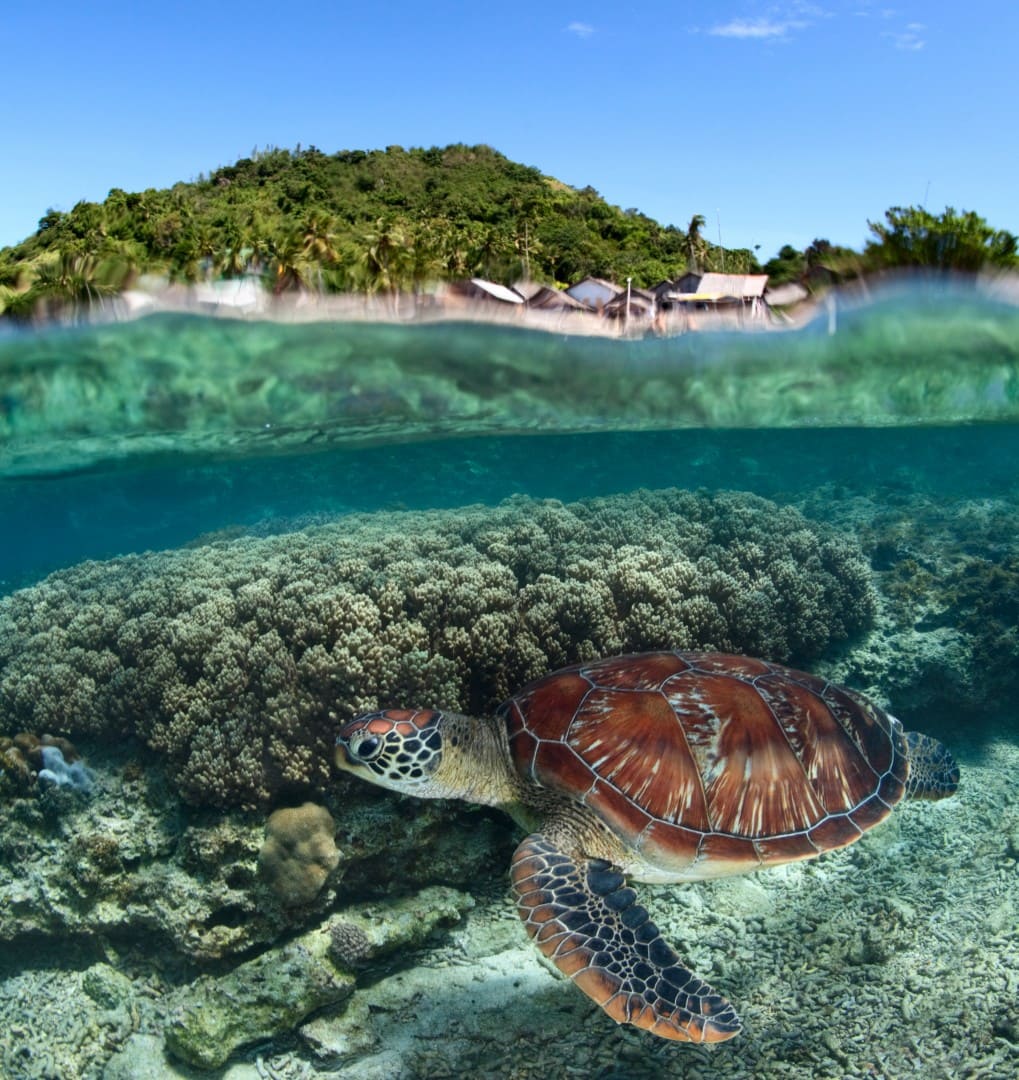
The diving in the Philippines is phenomenal!
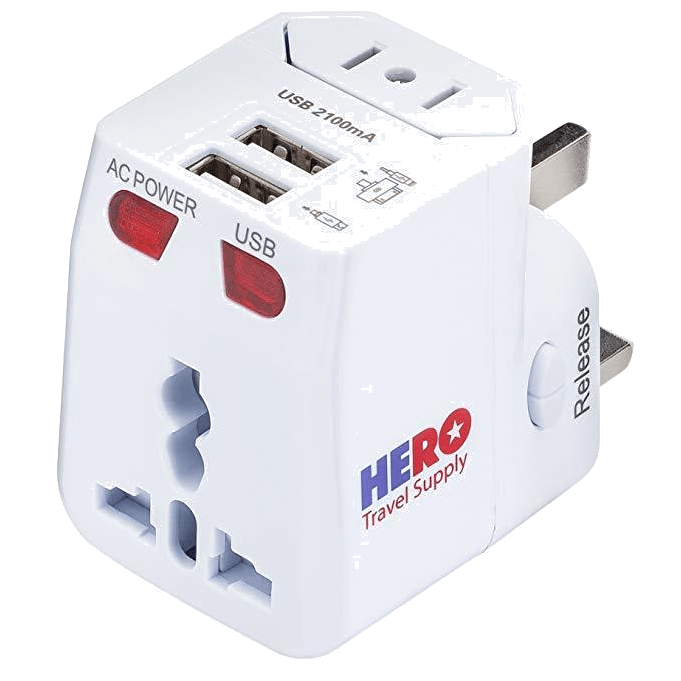 One of the best investments you can make is a worldwide travel adapter that will work anywhere! The one featured here is tough, reliable and a solid buy – Don’t leave home without one.
GET IT HERE
One of the best investments you can make is a worldwide travel adapter that will work anywhere! The one featured here is tough, reliable and a solid buy – Don’t leave home without one.
GET IT HERE
Must-Try Experiences in the Philippines
Meet the People in the Philippines
The Filipino people are some of the warmest, friendliest, and generous people I've met on my travels. They are always keen to find out where you're from and going, offering to show you the way and helping you haggle the best price; all with a smile on their faces. It's not a surprise to be invited out for a beer, back for some local delicacies, or even a place to stay! Embrace it: you'll meet some incredible friends, be taken to some wicked hidden spots and shown how to party local style!
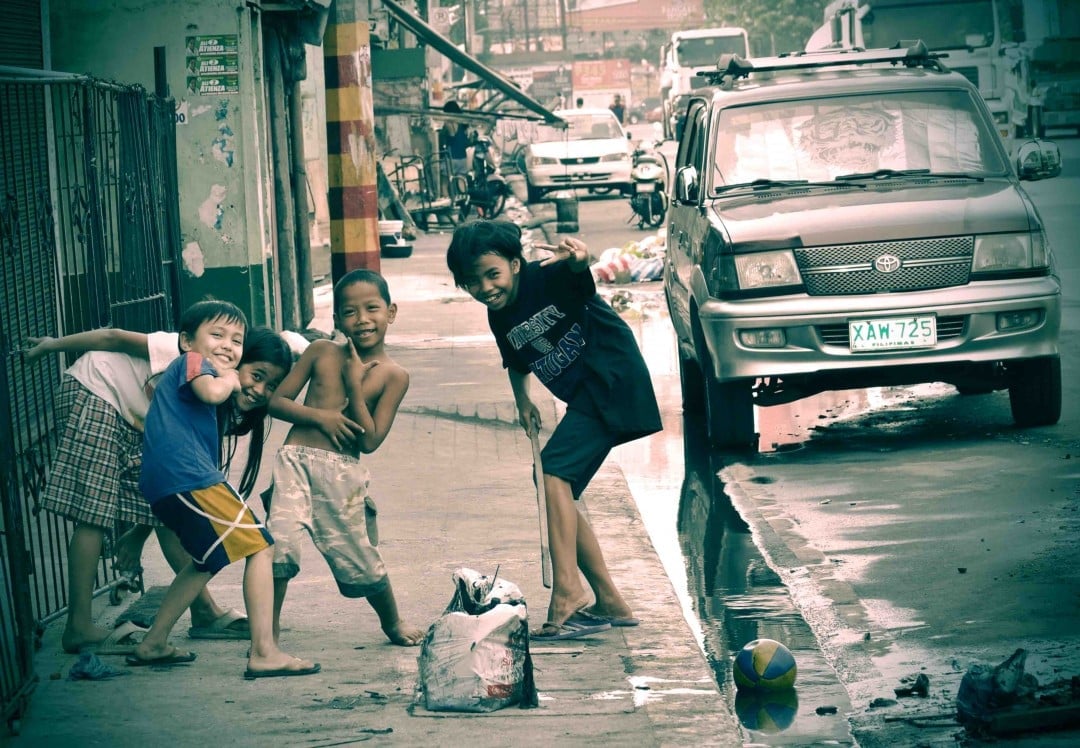
The Filipino people are awesome, the kids are hilarious!
What to Eat in the Philippines
The Philippines has an awesome selection of Street food; from the damn delicious to the slightly weird, there is something for everyone. The food in the Philippines is influenced from Spanish, Chinese and Malay recipes so expect a good mix of East meets West.
So what to try when wandering the streets and spoiled for choice? Let me tell you my favourite delicacies I tried while backpacking the Philippines...
- Chicken Adobo: Basically beautifully marinated Chicken or Pork in Soya Sauce and Vinegar. Seriously, delicious and so simple. Perfect on its own or with some noodles.
- Kare Kare: Kare Kare is famous throughout the whole country because it is SO delicious. If you're missing the curries from Asia grab this dish! Basically, oxtail and ox tripes stew with lots of vegetables, flavoured with ground roasted peanuts or peanut butter, onions and garlic.... Mmmm.
- Kinilaw: Sushi lovers, rejoice! I was skeptical trying raw food from the street, but wow! The raw fish salad is served in an acidic juice, usually kalamansi and vinegar, which “cooks” the meat.
- Paksiw Na Lechon: Lechon means ‘suckling pig’ in Spanish and is literally a whole pig roasted over charcoal for many hours for special occasions... This is considered the national dish of the Philippines so basically, a must try when backpacking the Philippines.
- Tapsilog: Missing your English cooked brekkies? This is the next best thing. Cured beef, fried rice and a fried egg, great to have after a boozy island hopping trip!
- Fresh Lumpia: Ever wondered what a spring roll crossed with a burrito would taste like? Well wonder no more! Filled with meat, lettuce, carrots, peanuts and even some coconut in there. Have it fresh or try the deep fried version – even more awesome.
- Chicharon: Deep fried pork skin or as I call them; The Doritos of The Philippines. Bags of these are opened and shared around when kicking back and relaxing, served with dips you now just need a good smoke or movie...
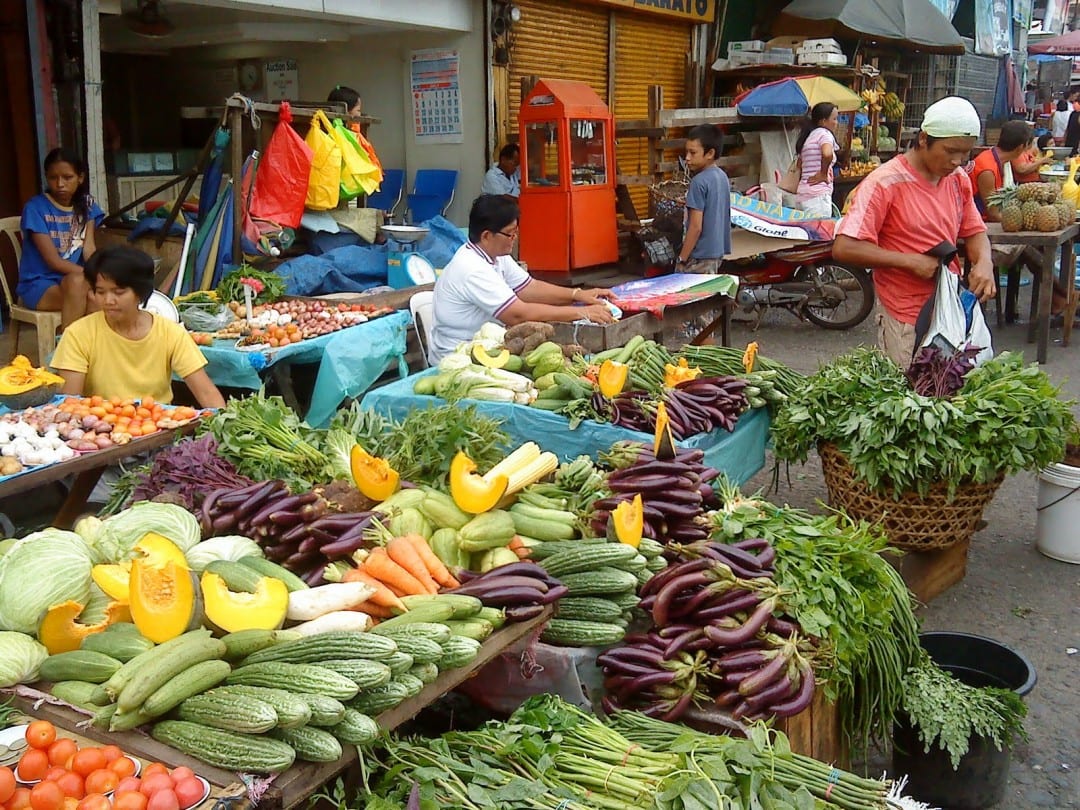
Trust me - Filipino food is highly underrated
For Filipino cooking classes, check out this site for awesome deals.
Festivals in the Philippines
- Ati-Atihan Festival: 3rd weekend of January in Kalibo, Aklan, this is one of the oldest religious celebrations in the country. Ati-Atihan is characterized by a parade filled with face-paint, indigenous costumes and dance
- MassKara Festival: Basically Masskara Festival is a giant masquerade party with Latin-inspired drumbeats, and intricate costumes, as well as sports events, concerts and a beauty pageant. Of course, participating in this event is also an opportunity for you to sample the most luscious delicacies that the city has to offer.
- Moriones Festival: Marinduque’s week-long Holy Week celebration combines Catholic pageantry with folk mysticism. During the festival, the centurion’s story will be reenacted in a theatrical play that’s staged by the locals.
- Giant Lantern Festival: San Fernando’s Giant Lantern Festival is a Christmas contest with giant bright lanterns. San Fernando has been fondly nicknamed as the “Christmas Capital of the Philippines.”
Diving in the Philippines
There are endless options for diving in the Philippines, but many of the best dive sites have already been mentioned in this guide, and are included on all of the Philippines itineraries!
- In the Palawan Region you have Coron Island, which has some of the best wreck dives in the world. Barracuda Lake in Coron Island is a great fresh-water site with alien-like underwater landscapes and legends of a monster-sized barracuda. Near Coron you can reach Apo Island by boat, a well-protected marine sanctuary and one of the best dive sites in the world.
- Tubbataha Reef National Park in the Sulu Sea, Palawan is a national park with over 600 fish species, 360 coral species, 11 shark species, and 13 dolphin and whale species.
- Puerto Galera in Mindoro - not too far from Palawan - has over 40 dive sites for all levels. Sabang is where the hardcore diving community and Long Beach is the easy-going beach culture.
- Monad Shoal in Malapascua, Cebu is famous for the elegant, oddly-shaped thresher sharks that breach the waters off the island.
You can snorkel with whale sharks in Donsul, and also dive “the Manta Bowl,” famous for the majestic manta rays.
Scuba Diving The Philippines on a Liveaboard Trip
With so much epic diving to be had in the Philippines, why not take your love of diving up a notch?
Consider joining a Liveaboard trip in the Philippines!
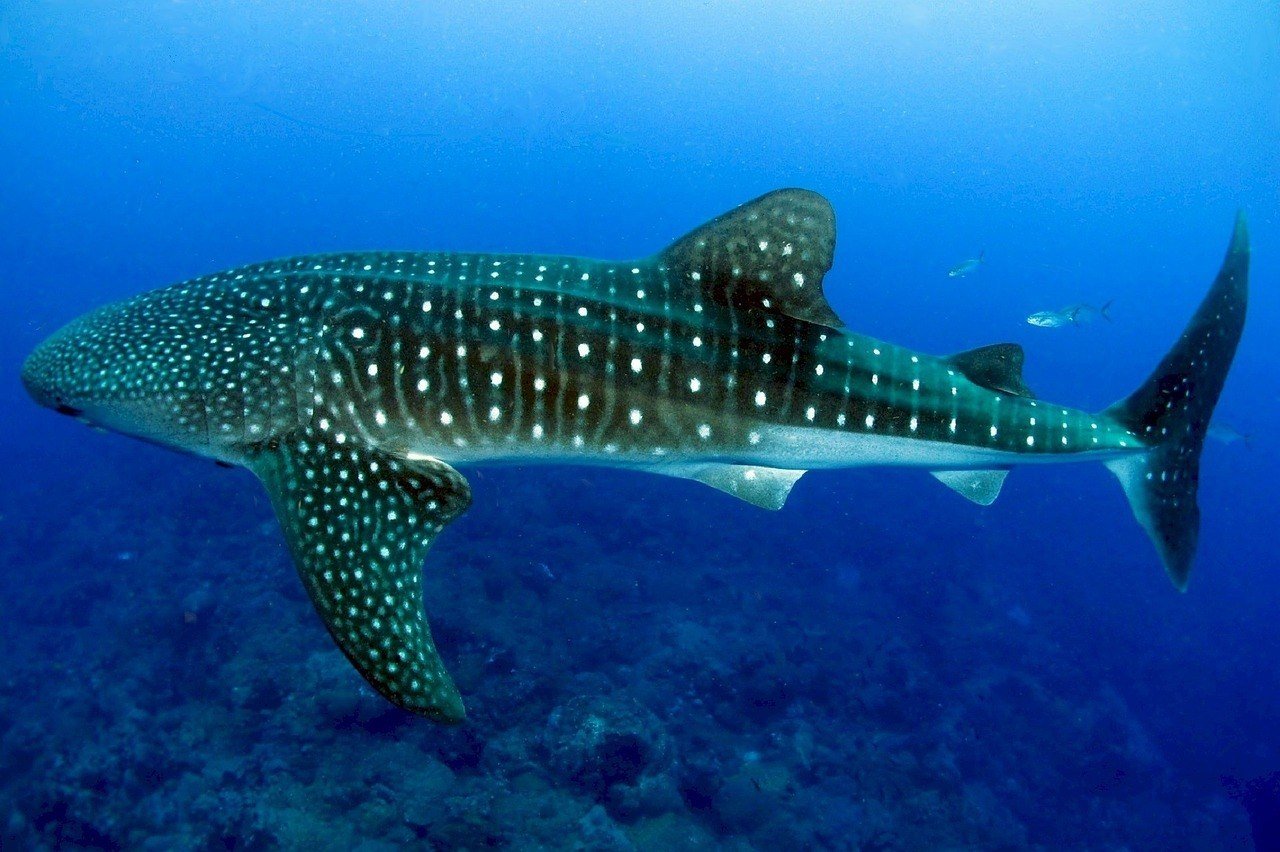
There is epic diving to be had on a Liveaboard trip in the Philippines!
Explore dive sites you never new existed, day after day. Eat delicious food, scuba dive, and spend you nights chilling out with other die-hard divers!
If diving inspires you, then I am sure you will love joining a Liveaboard trip and exploring some of the world's best diving locations!
Trekking in the Philippines
There are endless trekking options in the Philippines: remote hill hikes and active volcanoes, gentle strolls, an multi-day backpacking trips. Some popular treks include Cordillera and its rice terraces + Mt. Pulag. Not too far from here you can reach Sagada and hike in the hills.
Bohol and the Chocolate Hills are a great place to trek as well.
The Philippines is home to 25 active volcanoes that can be climbed to the summit. The best time to climb volcanoes is between March and June. Mt Mayon is one of the most popular and rewarding volcano climbs. Mt Pinatubo has a serene crater lake in the middle. Mt Apo has the highest peak at 2,954m. Mt Isarog will take you through jungles and waterfalls. Mt Guiting-Guiting is a strenuous 10 hour trek to the top, and Mt Kanlaon is the largest active volcano.
Kibungan Circuit is a three-mountain circuit in the town of Kibungan in Benguet. The circuit, which takes anywhere from two to three days to complete, spans across the mountains of Tagpaya, Oten, and Tagpew.Rock Climbing in the Philippines
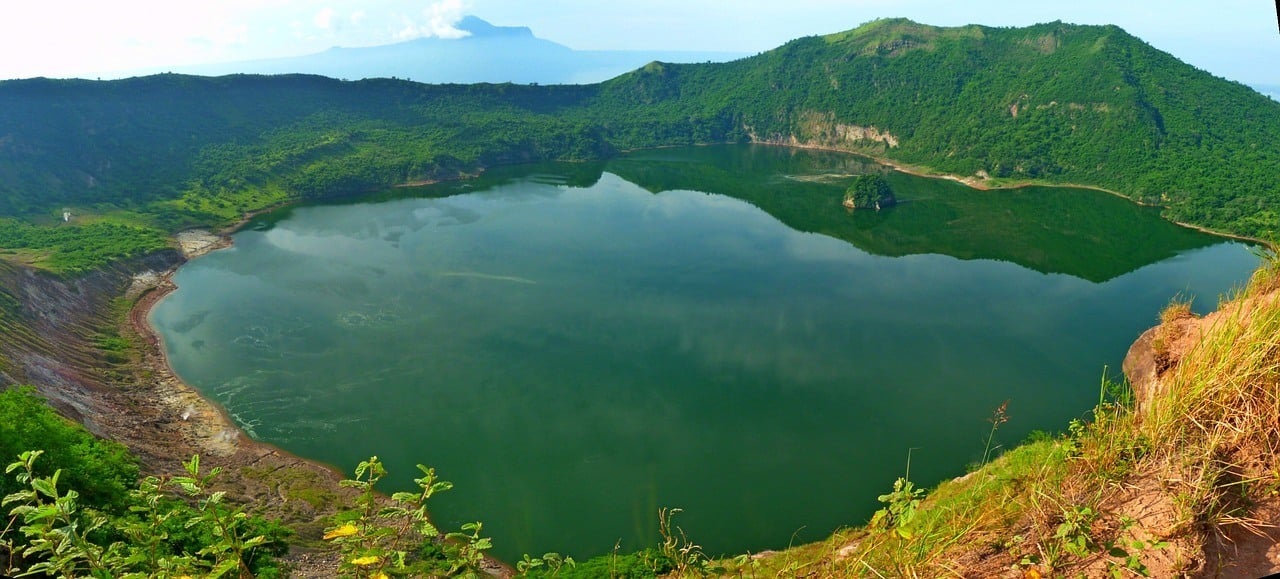
Crater Lake in the Philippines.
Rock Climbing in the Philippines
There are numerous places to rock climb in the Philippines and for all levels. Some of the most popular places to climb include:
Cantabaco and Poog on Cebu, the region of Sagada, sport climbing in Wawa in Montalban, Rizal, and a rural village on the foothills of the Sierra Madre near Manila. Luzon and the Visayas have plenty of options too.
A Brief History of the Philippines
The Philippines was originally inhabited by hunter-gatherers. The Spanish explorer, Magellan, claimed the islands for Spain in the 1520s.
Spanish conquistadors created a feudal system in the Philippines, and Spaniards owned vast estates worked by Filipinos. They also converted the Filipinos to Catholicism. You'll see much of this influence in the Philippines today.
In 1898 came war between the USA and Spain. The USA colonized the Philippines, though after WWII the Philippines became an independent country. Many 20th century Presidents are known for running dictatorships, but poverty and education levels have been improving in the 21st century.
Be aware, however, that the Philippines current President, Duterte, is yet another dictator known for his tough war on drugs, where thousands of people are dying.
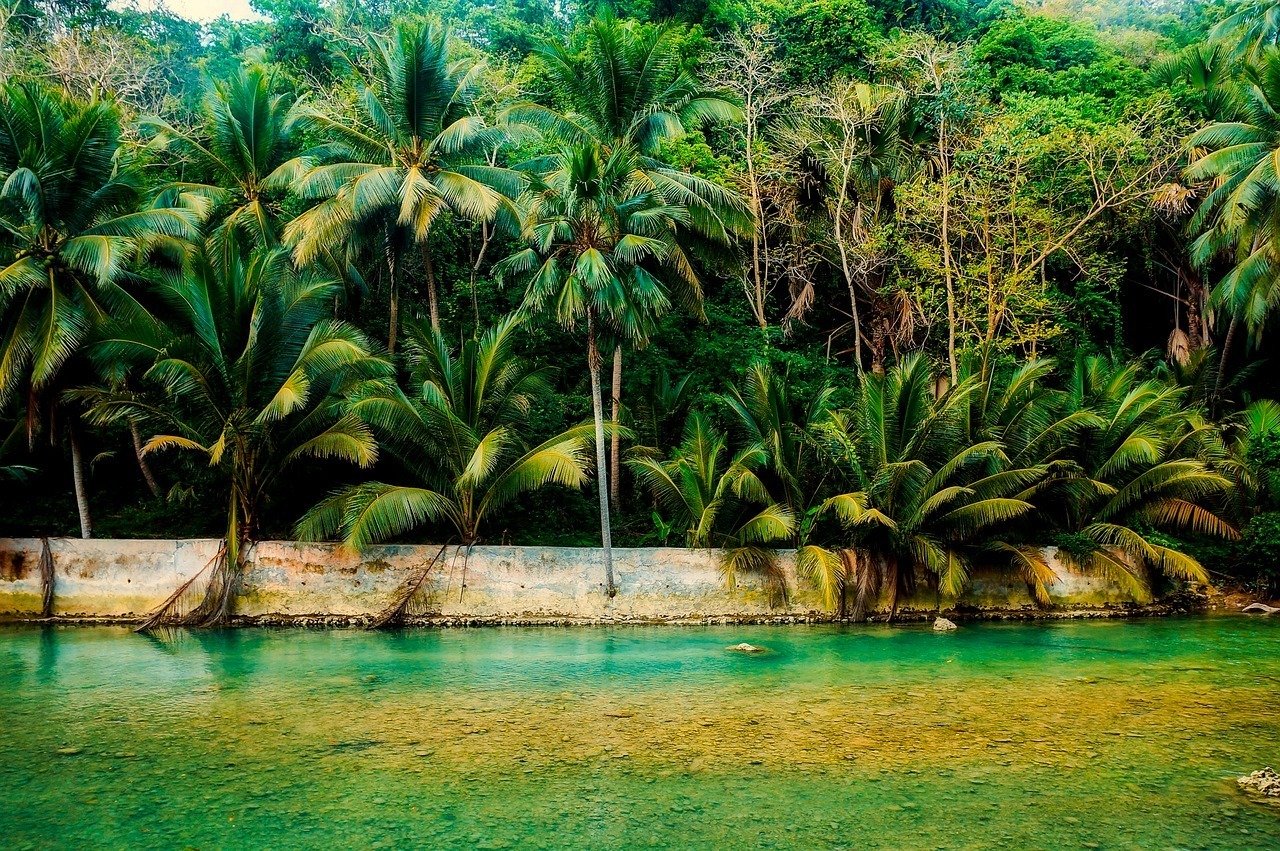
River and Palm Trees in the Philippines
Closing Thoughts
Being a Responsible Backpacker in The Philippines
Reduce your plastic footprint: Perhaps the best thing you can do for our planet is to make sure you do NOT add to the plastic problem all over the world. Don’t buy one-use water bottles, the plastic ends up in landfill or in the ocean. Instead, pack a tough travel water bottle.
Go and watch A Plastic Ocean on Netflix – it’ll change how you view the plastic problem in the world; you need to understand what we are up against. If you think it doesn’t matter, get off my fucking site.
Don’t pick up single use plastic bags, you’re a backpacker – take your daypack if you need to go to the shop or run errands.
Bear in mind, that many animal products in countries you travel through will not be ethically farmed and won’t be of the highest quality. I’m a carnivore but when I’m on the road, I only eat chicken. Mass-farming of cows etc leads to the rainforest being cut down – which is obviously a huge problem.
Recently, my gear-venture, Active Roots has started to sell water bottles. For every Active Roots water bottle sold, we donate 10% to PlasticOceans.org – an awesome initiative aimed at educating people on the risk of single use plastic and helping to clean up our oceans. Help save the planet, whether you take an Active Roots bottle or not – TAKE RESPONSIBILITY for your plastic footprint, don’t be a dick.
Need more guidance? – Check out our post on how to be a responsible backpacker.
Be Good to the Philippines
Writing your name in black marker on temples, chugging beer while shirtless, swearing loudly and visiting unethical animal attractions? You Sir, are a twat. Luckily, most backpackers don’t fall into this category but, when you’re out and about and have had a few too many drinks, it can be easy to embarrass yourself.
Wear a helmet when you hop on a motorbike in Asia. Despite being an experienced driver, I’ve had a total of three crashes in South East Asia over the last ten years. On the one occasion, I wasn’t wearing a helmet, I split my head open and had to go to the hospital. It was an expensive mistake. The local people are sick of scraping foreigners off the road and, trust me, you don’t look cool for not wearing a helmet.
Humans are humans; treat people you meet along the way with the same respect you would show your friends and family back home. You are not superior to anyone including the girls/guys walking the streets.
Go to Asia and have the time of your life, do the things you’ve dreamed of but be respectful along the way. Travelling the world makes you an ambassador for your country, which is awesome. We can make a positive impact on people when we travel and get rid of any ugly stereotypes that may be associated with your country…
It's Tie to Go to the Philippines
So there you have it amigos, everything you need to know to hit the road and begin backpacking The Philippines, so get out there already.
Got more to add to the guide? Let me know in the comments below!
Want to learn how to travel the world on $10 a day? Check out the Broke Backpacker's Bible for FREE!
Yay for transparency! Some of the links in this post are affiliate links. This means that if you book your accommodation, buy a book or sort your insurance, I’ll earn a small commission at no extra cost to you. I only link to stuff I’ve actually used and never endorse crap. Your support helps me keep the site going.”
Need more Inspiration?
Like this Post? PIN ME!!







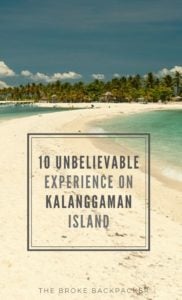
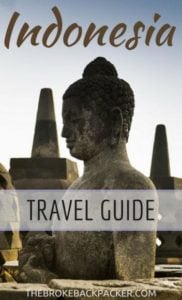

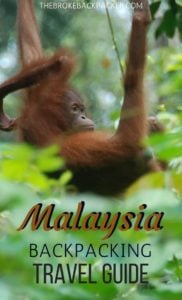
Comments
Post a Comment